#The characterization is an opponent of Captain America
Explore tagged Tumblr posts
Text
“We don't need--”
“Captain America!!”
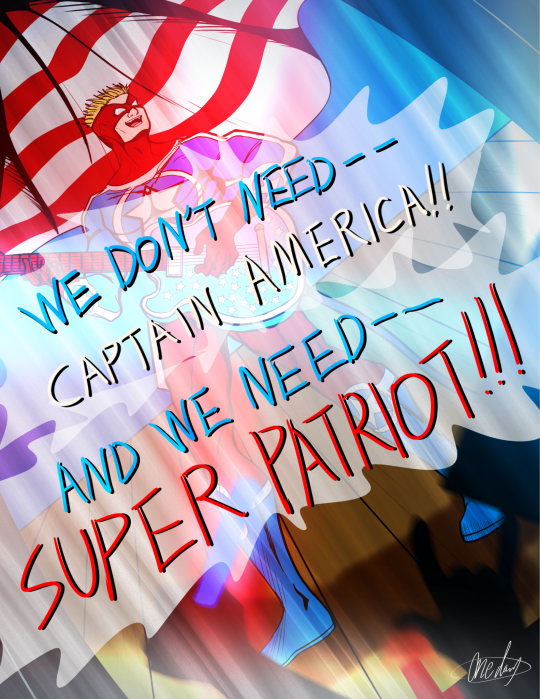
“And we need--”
“SUPER PATRIOT!!!”
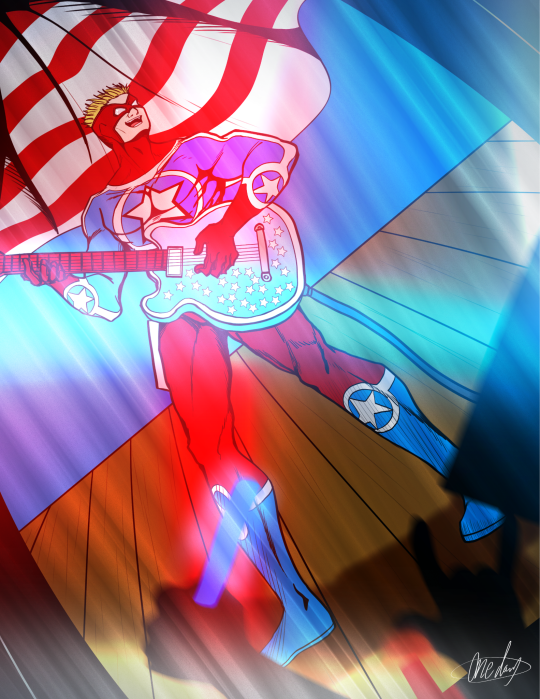
#john walker#marvel#us agent#johnwalker#u.s.agent#john walker positive post#john walker defense squad#marvel comics#marvel 616#super patriot#fanart#my art#We need John Walker!#We need more John Walker--#Let me see more John Walker--#Don't hate Steve Rogers.#Don't hate Captain America#The characterization is an opponent of Captain America
4 notes
·
View notes
Text
Meet The Team- Shadow Organization
Captain: Romano Team Name: Shadow Organization Team Home Field- Sly Stadium in Naples, Italy Team Colors- Midnight Purple & Blaze Orange Mascot- Henchman the Fox Team Catch Phrase- Swift As A Fox & Unstoppable As A Shadow.
Logo, Team Merch & Uniform. Romano's team as several Logos, mainly because I made them all and couldn't decide which one I liked better so I just used all of them. You'll notice only 2 fingers on the batting gloves are colored, It makes the captains favorite hand gesture pop more. The Pattern that looks like stars is actually supposed to be glitter it's a midnight purple glitter, it sparkles in the sun but it's hard to translate that in photoshop but I did my best. I'll link the true color here.


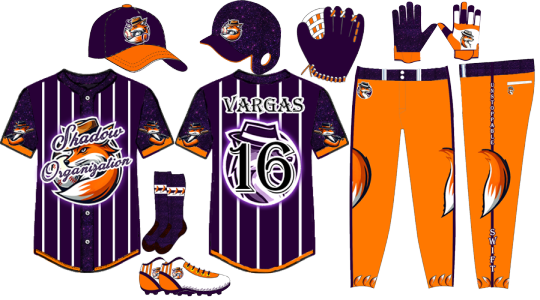
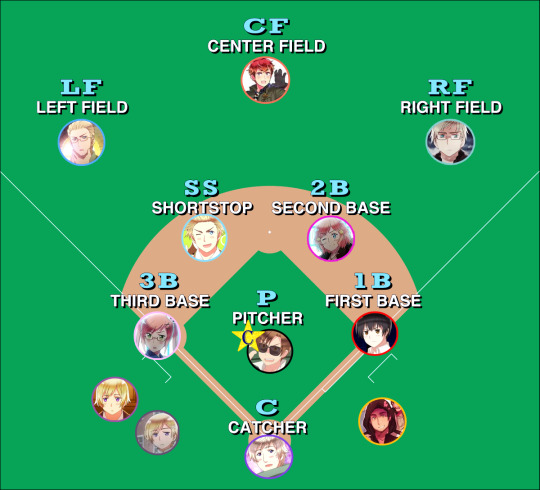
Romano's Team
Denmark - #69 - Shortstop
Romano - #16 – Mouth - Pitcher
Sweden - #92 - Right Field
Nyo!America -#01 - Home Run Heroine
Ireland- #22 - Center Field
Nyo!England - #19 - 3rd Base
Japan- #08 - The Tsunami - 1st Base (SUB IN PITCHER)
Germany - #85 - Left Field
Russia - #27 - Catcher
Iceland- #45- SUB IN (Not On Roster)
Norway - #40- SUB IN or Out (Not On Roster)
Turkey- #44 SUB Out (Not On Roster)
Sitting out this name: Iceland, Norway & Turkey. Here is everyone Romano determined was not too ugly for his team, granted he did not wat Germany, he was last pick and had to take him by default. No idea why Italy didn't pick him. Romano attempted to trade Germany for someone but Italy wasn't interested. (Which is cap because he does have the better team stats wise. He seemed to actually think about it while Romano was just doing a popularity contest, on brand)
He also insisted on pitching this game. I tried to tell him he's not a pitcher, he's a first baseman and I have not made pitching stats for him, he wouldn't hear it. So here is Romano's pitching profile I had to make up on the fly. But it's not bad to have more pitchers to rotate with. I selected Japan as his second for him.
Check his Pitching Profile down below >>>
Pitching Profile: Romano
Best Pitches:
Fast Ball- His primary pitch, likely sitting in the 90-94 MPH range. It would have good movement and location, setting up his other pitches effectively. (can throw faster if he's in a bad mood)
Slider- Romano's slider is his most effective pitch, characterized by sharp, late-breaking movement that confuses hitters.
Worst Pitch:
Curve Ball- While still a valuable part of his arsenal, Romano's curveball is less effective compared to his other pitches.
Personality Breakdown
Quick-Temper and Aggressiveness:
Romano’s quick temper and aggressive demeanor can influence his pitching in both positive and negative ways. It fuels his competitive spirit and determination but can also lead to occasional lapses in focus or over-aggressiveness.
Rude and Condescending:
Romano’s rudeness and condescending attitude towards opponents can create a psychological edge, intimidating hitters and disrupting their focus. However, it can also lead to conflicts and distractions if not managed properly.
Emotional Highs and Lows:
His emotional nature can lead to highs and lows during games. When things are going well, his performance can be stellar, but he needs to manage his emotions to avoid letting frustration affect his control.
4 notes
·
View notes
Text
People after the RWBY v ACEOPS fight really upset RWBY won when
1. RWBY was getting their asses handed to them for half the fight -Harriet overpowered Ruby several times -Blake and Yang absolutely getting owned by Elm and Vine -Marrow using whatever his semblance is supposed to be to stop Weiss (he only loses because of a small miscalculation he couldn’t possibly have known about beforehand because no one in this show talks to each other about literally anything ever)
2. Unlike the Ace Ops, who were trained to fight in and out of a team, RWBY is ONLY trained to fight as a team -Blake and Yang had to use combo attacks to win against Vine and Elm -Ruby mostly outran Harriet to wear her down -Doing that involved her occasionally returning to her partner’s side to lend aid
3. The Ace Ops have been trained to follow military fighting and thereby fight mostly by the way Atlas taught them, while Beacon trained hunters to think outside the box in order to win -Examples include slingshot Ruby, Captain America and Thor against a Deathstalker, Greek Goddess taking on 4v1. -In order to win, Team RWBY had to use the quick thinking the show occasionally remembers they’re capable of. -Even as far back as episode 3 (V7), we knew the Ace Ops would lose to the protags because of the way Vine and Elm responded to how Nora, Ren, and Jaune attacked Grimm.
What people should actually be upset about:
1. Ironwood deciding to abandon literally everyone else in the world when he’s got a literal army at his disposal that didn’t appear to actually be doing anything during the Grimm Invasion below -Grimm have been proven to consistently be small potatoes in comparison to the human/Faunus opponents -We didn’t see any but the protags and the Ace Ops fighting in Mantle, which means all of Atlas Academy should be well-rested and perfectly capable of taking on an army of Grimm -Third years in Beacon are capable of obliterating hordes of Grimm (Team CFVY V3), which means Atlas should also be capable of the same -Salem and the giant whale Grimm are the only ACTUAL threats and all you really need to do is distract her until someone kills the whale
2. Ruby being unable to summon her Silver Eye MacGuffin because of grief when that’s literally the reason she could use them at Beacon Tower in V3
What’s good in this and people should praise:
1. The consistency of the Ace Ops, of all things -Introduced as Atlas elite -Constantly are shown to be capable of group work and singular work -Consistency of ‘just a job’ and ‘following orders’ -It’s expected for them to not question Ironwood because Atlas Academy has been characterized as a military school and in the military, soldiers are expected to follow orders, not question them -The question of loyalty being brought up in regards to them and to RWBY -Because RWBY pledged their loyalty to the people of Remnant while the Ace Ops pledged their loyalty to the military of Atlas and that’s an understandably big difference
2. RWBY being called out for their BS and hypocrisy -Blake and Yang potentially putting people in danger by giving military secrets to a fugitive in an open and unsecured area -Ruby lying about Jinn, the relic, and Ozpin
#rwde#Ruby Rose#Blake Belladonna#Yang Xiao Long#Weiss Schnee#Vine Zeki#Elm Ederne#Marrow Amin#Harriet Bree#Ace Ops
33 notes
·
View notes
Text
Okay -- you know what we’re not talking about enough?
How eventually the main narrative of the MCU shows its imperialistic ideology that they have tried to hide under a very fragile façade of “complexity”. (Guess what? Accountability never mattered.)
Don’t get me wrong - I know that the sole purpose of Avengers: Endgame was to bring us all into the movie theater, which it did, and not to be good or make sense, but the way to bring us all into the movie theater was so paint the product with a glittery progressive varnish while the product was still subliminally feeding us conservative messages. And yet Endgame was so badly written that the varnish went off in multiple points...
The movie basically spells out that Tony Stark was right in endorsing security at the cost of freedom (fun fact: outside the shiny attention-grabbing fatherhood arc that got us all like ‘aww’, there is no character development for Tony, who was convinced he needed to develop technology to save the world and died knowing he had needed to develop technology to save the world).
Thanos justifies Tony’s actions all along, and the narrative doesn’t contradict a very simple reading: Steve has been precious about his little fancy morals while Tony was right in Age of Ultron and Civil War.
Again, it also doesn’t do justice to Tony’s character at all because he never learns anything. He starts thinking he needs to save the world with his technology and ends being proven right, while Steve was wrong in breaking up the team because of morals they couldn’t afford to entertain.
Our first mistake was dismissing Age of Ultron as Whedon crap that we could ignore because it was so bad we could treat it as an outlier.
Because now that we have the full picture... it wasn’t an outlier. The narrative has been consistent ever since then, even by switching directors/writers.
Steve: “Earth’s Mightiest Heroes.” Pulled us apart like cotton candy. Tony: Seems like you walked away all right. Steve: Is that a problem? Tony: I don’t trust a guy without a dark side. Call me old fashioned. Steve: Well let’s just say you haven’t seen it yet. Tony: You know Ultron is trying to tear us apart, right? Steve: Well I guess you’d know. Whether you tell us is a bit of a question. Tony: Banner and I were doing research. Steve: That would affect the team. Tony: That would end the team. Isn’t that the mission? Isn’t that the “why” we fight, so we can end the fight, so we get to go home? Steve: Every time someone tries to win a war before it starts, innocent people die. Every time.
Don’t get me started on Steve’s “dark side” because you don’t want to pull on that thread. How they managed to simultaneously have a pretty 100% heteronormative picture and paint queerness as toxic while having no queerness in the picture.
But Age of Ultron just spelled it out. We thought that what Age of Ultron put on the table was what was going to be subverted eventually. But it was never subverted.
Tony was the one who needed to come up with the technology to save the world. Steve’s home was the past with Peggy. The story was never about found family, it was about a team that had its reason to exist as long as the fight wasn’t over, then each of them would go home. (If you don’t have a home, you can jump off a cliff.)
Tony: Pfft! I saw this coming a few years back. I had a vision. I didn’t wanna believe it. Thought I was dreaming. Steve: Tony, I’m gonna need you to focus. Tony: And I needed you. As in past tense. That trumps what you need. It’s too late buddy. Sorry. You know what I need. I need to shave. And I believe I remember telling you, Cap. Rhodey: Tony, Tony, Tony, stop! Tony: That what we needed was a suit of armor around the world! Remember that? Whether it impacted our precious freedom or not--that’s what we needed! Steve: Well, that didn’t work out, did it? Tony: I said, “we’ll lose”. You said, “We’ll do that together too”. And guess what, Cap? We lost. You weren’t there. But that’s what we do, right? Our best work after the fact? We’re the Avengers, we’re the Avengers. Not the Prevengers, right?
Eventually they save the world by literally being “prevengers”, going back in time to get the stones before Thanos and (*facepalm*) defeating a Thanos who had no idea who they even were because he had not met them yet. (Let’s not even discuss how bad storytelling that is, regardless of anything else: the final battle is against... a past version of the villain who hasn’t met them or done the thing to them yet, so the “avenging” is purely one-sided and the villain has no clue who the fuck their opponents are before learning about them 3 seconds before and figuring out what happened. Sigh.)
Obviously the time travel is a fantastic element, but it is still a symbol of preventing the villain from operating. The war has started for them, but not for their enemy -- we need to take the weapon of mass destruction before the enemy uses them... (oops.)
At the end of the day, those five years of mourning (and problems that will be caused by half the population “skipping” five years’ worth of life of the other half) and possibly the deaths in the movie... are because Steve Rogers broke the team up because he was being fastidious about his precious freedom and too high-and-mighty to trust Tony’s judgement.
Sure, the scene I quoted is framed as Tony’s desperate venting, but does the narrative challenge that? No, in fact it plays clever and places the avengers as actual “prevengers” through the time travel thing.
Sure, Steve is given flashy moments that tell us he’s “worthy” and has a great ass and whatever. But does the narrative ever challenge the subliminal, subtle villainization of him operated by those few movies? Although of course, Endgame is written badly enough that instead of subtly framing him like some kind of protofascist gay libertarian, he just has no characterization at all except of affected from a severe case of heteronormativity.
I mean, if I wanted to instill a deeply conservative and imperialistic ideology to a bunch of progressive kids, I’d dangle Captain America in front of them and then destroy him by emptying his entire arc of meaning. Among the rest.
#not mcu friendly#my mcu thoughts#this post is very salty if you disagree with it just ignore it#i'm basically venting#i'm also very tired right now this has drained me#lol#mcu
488 notes
·
View notes
Text
Notes on Robert McKee’s “Story” 17: Essential Qualities of a Protagonist (and Other Characters)
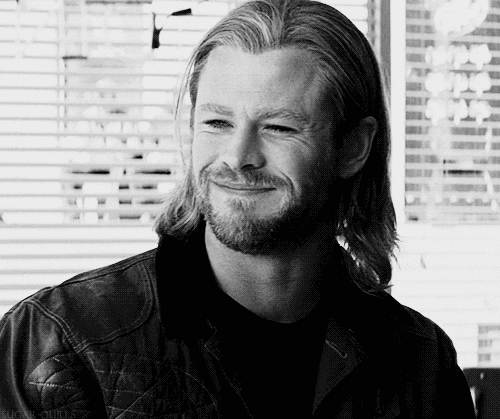
Today we cover McKee’s rundown of the essential qualities of the protagonist, a.k.a. The Main Character who does The Thing. That’s the dictionary definition; trust me I have a Bachelor’s in English. Because Thor is the best my favorite superhero, I’m going to see if he (in the Marvel Cinematic Universe) ticks all the boxes of McKee’s qualities of a protagonist. Warning: all the spoilers. Additional Warning: Long post.
The Protagonist
Usually, the protagonist is one person. However, sometimes stories are driven by a duo, such as THELMA AND LOUISE, or a trio or more. These are called Plural-Protagonists.
For two or more characters to form a Plural-Protagonist, two conditions must be met:
All individuals in the group share the same desire
In the struggle to achieve this desire, they mutually suffer and benefit.
So we can say that THE AVENGERS has the Plural-Protagonists of all the Avengers. They seek to defeat Loki, regain the Tesseract, and save the world from the Chitauri invasion.
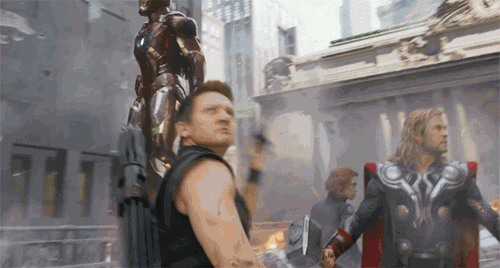
A story can also be Mutliprotagonist. Here, characters pursue separate and individual desires, suffering and benefiting independently. We could use the unfortunate film Thor 2: The Dark World as an example. (Do you remember it lol?) Loki and Thor are forced to work together to defeat the Dark Elves, but each for very different desires and benefits.
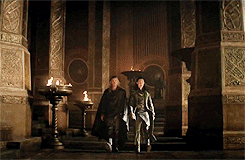
Other examples of Multiprotagonist works would be PULP FICTION and THE BREAKFAST CLUB, just to name a couple more examples.
Multiprotagonist works often result in Multiplot stories. Rather than driving the telling through the focused desire of a protagonist, either single or plural, these works weave a number of smaller stories, each with its own protagonist, to create a dynamic portrait of a specific society. PULP FICTION certainly displays the Multiplot at work well.
Also, as I’m sure you’re aware, the protagonist doesn’t need to be human. Bugs Bunny is the protagonist in Looney Tunes. Hamtaro is the protagonist in Hamtaro. Thomas the Tank Engine is a sentient train.
“Anything that can be given a free will and the capacity to desire, take action, and suffer the consequences can be a protagonist. It’s even possible, in rare cases, to switch protagonists halfway through a story. PSYCHO does this, making the shower murder both an emotional and formal jolt.”
Now let’s dive into the hallmark qualities necessary of all protagonists.
1. A Protagonist Is a Willful Character
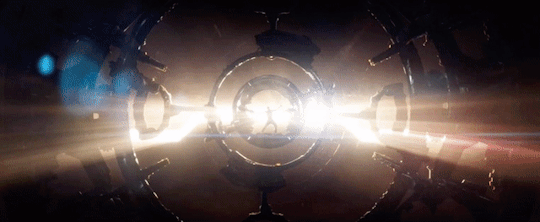
“Other characters may be dogged, even inflexible, but the protagonist in particular is a willful being. The exact quantity of this willpower, however, may not be measurable. Quality of willpower is as important as quantity.”
Thor is perhaps one of the most willful characters of the Avengers, second only to Captain America. His sense of justice and responsibility as protector of realms demands that he make bold decisions and act for the greater good. His desires are always clear because he is transparent, the polar opposite of his brother.
However, not all protagonists display their willpower. Take the character Groot, who may appear to be passive particularly in Endgame when he is going through his rebellious teen years. Yet when he offers a piece of himself to become the hilt of Thor’s new weapon Stormbreaker. It is clear that despite his outward apathy, he has not lost the desire to assist his friends and stop Thanos.
McKee cautions us that:
“The truly passive protagonist is a regrettably common mistake. A story cannot be told about a protagonist who doesn’t want anything, who cannot make decisions, whose actions effect no change at any level.”
2. A Protagonist Has a Conscious Desire
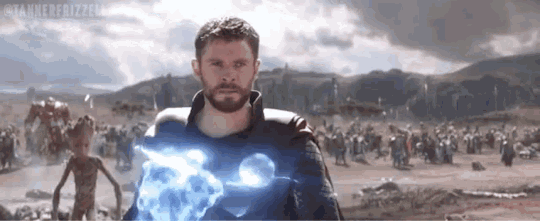
In each of the Marvel films, Thor’s outward desires have been somewhere along the lines of “Protecting the Nine Realms.” The protagonist’s will impels a known desire. The protagonist has a need or goal, an object of desire, and knows it. For many characters, a simple, clear, conscious desire is sufficient.
3. The Protagonist May Also Have a Self-Contradictory Unconscious Desire
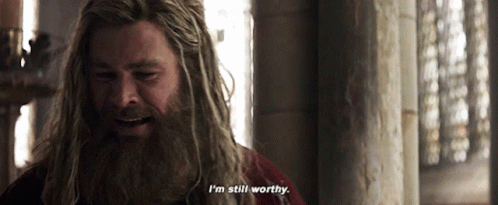
Thor’s outward desires have always been the altruistic “Protecting the Nine Realms,” but in his deep character, from the very first Thor film to Endgame, Thor has struggled to find himself worthy in the eyes of his father, of his people, and, at his very core, in the eyes of himself. In contrast to his outward desires that are self-sacrificial, deep down he has always felt the uncontrollable wish to be deemed “worthy,” not only by Mjolnir, but by his father, Loki, Jane, the people of the Nine that he wishes to serve, and ultimately by himself. Having grown up as the first son of the Allfather, the throne is his by default and everything in life has been handed to him. Yet he has always sought to prove his worthiness is not from birthright.
McKee states:
“The most memorable, fascinating characters tend to have not only a conscious but an unconscious desire. Although these complex protagonists are unaware of their subconscious need, the audience senses it, perceiving in them an inner contradiction. The conscious and unconscious desires of a multidimensional protagonist contradict each other. What he believes he wants is the antithesis of what he actually but unwittingly wants. What would be the point of giving a character a subconscious desire if it happens to be the very thing he knowingly seeks?”
Excluding his battle with the frost giants in Jotunheim at the beginning of the first Thor film when he was brash and immature, Thor has never gone against an enemy in order to prove his worthiness. When he fails to stop Thanos, he comes to the conclusion that he is worthless, and it is only thanks to Frigga that he realizes that not only is he still worthy; he has always been worthy.
4. The Protagonist Has the Capabilities to Pursue the Object of Desire Convincingly
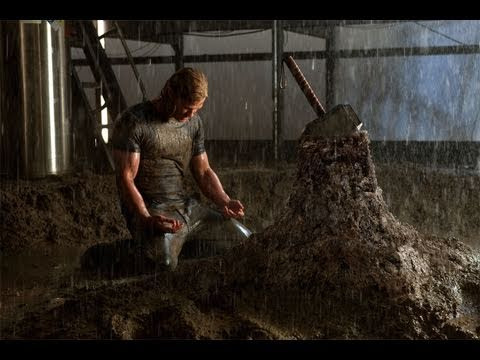
“The protagonist’s characterization must be appropriate. He needs a believable combination of qualities in the right balance to pursue his desires. This doesn’t mean that he’ll get what he wants. He may fail. But the character’s desires must be realistic enough in relationship to his will and capacities for the audience to believe that he could be doing what they see him doing and that he has a chance for fulfillment.”
In the first Thor movie, Odin exiles his son to Earth until he has proved himself worthy as his successor to the throne. Thor, as brash and confident as he was at the start of the movie, convinces Jane and the audience that he will be able to retrieve Mjolnir immediately. This is proven not only by his unshakable confidence, but also by the way he destroys any and all opponents who stand in his way. The audience feels the same confidence as Thor, that it is just a simple matter of walking in and taking back what is rightfully his.
Yet to our dismay we see that he is not yet worthy when he is unable to regain Mjolnir.
5. The Protagonist Must Have at Least a Chance to Attain His Desire
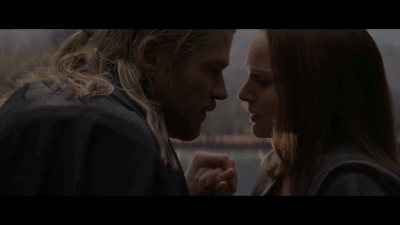
“An audience has no patience for a protagonist who lacks all possibility of realizing his desire. The reason is simple: No one believes this of his own life. No one believes he doesn’t have even the smallest chance of fulfilling his wishes. But if we were to pull the camera back on life, the grand overview might lead us to conclude that, in the words of Henry David Thoreau, “The mass of men lead lives of quiet desperation,” that most people waste their precious time and die with the feeling they’ve fallen short of their dreams. As honest as this painful insight may be, we cannot allow ourselves to believe it. Instead, we carry hope to the end.
Hope, after all, is not unreasonable. It’s simply hypothetical. ... We all carry hope in our hearts, no matter the odds against us. A protagonist, therefore, who’s literally hopeless, who hasn’t even the minimal capacity to achieve his desire, cannot interest us.”
When Thor is unable to retrieve Mjolnir and Loki tells him that his return to Asgard has been forbidden, he truly hits rock bottom and becomes hopeless. Both he and the audience feel that there is no way to realize his desire of returning home and taking the throne.
But then minutes later, both Jane and Dr. Selvig show up to rescue him from detention, and from there hope is found in his newfound friends.
6. The Protagonist Has the Will and Capacity to Pursue the Object of his Conscious and/or Unconscious Desire to the End of the Line, to the Human Limit Established by Setting and Genre.
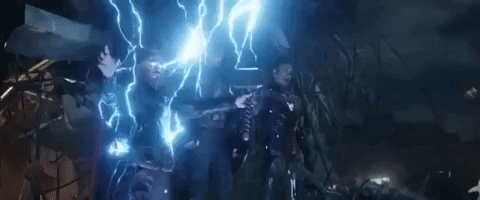
“The art of story is not about the middle ground, but about the pendulum of existence swinging to the limits, about life lived in its most intense states. We explore the middle ranges of experience, but only as a path to the end of the line. The audience senses that limit and wants it reached. For no matter how intimate or epic the setting, instinctively the audience draws a circle around the characters and their world, a circumference of experience that’s defined by the nature of the fictional reality. This line may reach inward to the soul, outward into the universe, or in both directions at once. The audience, therefore, expects the storyteller to be an artist of vision who can take his story to those distant depths and ranges.”
Just look at the character development we see in Thor from the first movie to Endgame. An immature, hot-headed, entitled boy has matured into a man willing to make any sacrifice, to expend every last drop of sweat, blood, and power not to prove his strength, not even to prove his worth, but to restore balance and justice to the world.
7. A Story Must Build to a Final Action Beyond Which the Audience Cannot Imagine Another
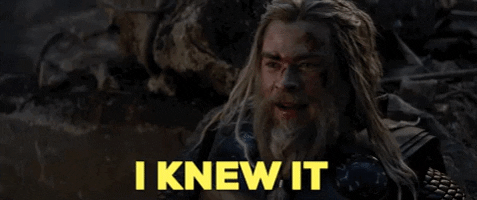
“In other words, a film cannot send its audience to the street rewriting it. If people exist imagining scenes they thought they should have seen before or after the ending we give them, they will be less than happy moviegoers. We’re supposed to be better writers than they. The audience wants to be taken to the limit, to where all questions are answered, all emotions satisfied--the end of the line.
The protagonist takes us to this limit. He must have it within himself to pursue his desire to the boundaries of human experience in depth, breadth, or both, to reach absolute and irreversible change. This, by the way, doesn’t mean that your film can’t have sequel; your protagonist may have more tales to tell. It means that each story must find closure for itself.”
It’s 2020 and fanfiction is now mainstream. But not all fanfics are born from dissatisfactory endings. Rather, many of them are born because we yearn to fill in all of the little in-between moments and what-ifs that arise unbidden in our minds because of our love of the work and its characters.
While I wonder how Thor will continue his life without Asgard, without his people, and most of all, without Loki, a sojourn seems like the best way for a man who has grown up within the confines of court decorum and lofty expectations to find out who he wants to be. And most importantly, Thor has come to terms with the fact that he is not meant to be a leader, and that he is worthy--not necessarily of the throne or of anyone else’s respect/love/loyalty--but that he is worthy of self-respect. To me, this is a satisfactory ending for his character in MCU.
8. The Protagonist Must Be Empathetic; He May or May Not Be Sympathetic
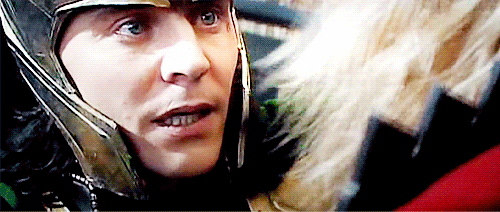
“Sympathetic means likable. Tom Hanks, for example, in his typical role: The moment he steps on screen, we like him. We’d want him as a friend, family member, or lover. He has an innate likability and evoke sympathy. Empathy, however, is a more profound response.
Empathetic means “like me.” Deep within the protagonist the audience recognizes a certain shared humanity. ... There’s something about the character that strikes a chord. In that moment of recognition, the audience suddenly and instinctively wants the protagonist to achieve whatever it is that he desires.”
To be honest, as a MASSIVE Thor fan, the first two movies stayed pretty true to the traditional comic Thor, who was serious, spoke in Ye Olde Englishe, and was such a lofty, justice-driven hero that he was hard to relate to. The Thor of the first two movies wasn’t exactly for everyone.
However, his complex relationship with Loki is what, in my opinion, managed to make him and Loki in particular empathetic to the audience. To love someone while knowing they are poison, to continue giving them chances when you know full well that it will likely end up harming you, and yet still refusing to give up hope on them, is a bitter battle that many of us face.
Ragnarok in particular is what cemented Thor’s empathy, but also his sympathy more than anything else. They dropped all of the old-timey speak, got downright silly, and let Hemsworth’s comedic talents shine through to brilliant effect.
Not only did Ragnarok make Thor one of the most beloved characters in MCU, it also shows Thor’s acceptance of Loki for the trickster that he is. He no longer desires to “fix” Loki, and Loki, who desires acceptance more than anything, finds a new respect for his brother. This makes Loki’s death all the more poignant later, when it seems that the two brothers have finally become able to coexist.
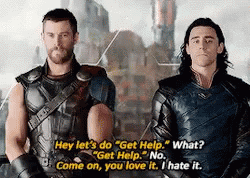
On Audience Bond
“The audience's emotional involvement is held by the glue of empathy. If the writer fails to fuse a bond between filmgoer and protagonist, we sit outside feeling nothing. Involvement has nothing to do with evoking altruism or compassion. We empathize for very personal, if not egocentric, reasons. When we identify with a protagonist and his desires in life, we are in fact rooting for our own desires in life. ... The gift of story is the opportunity to live lives beyond our own, to desire and struggle in a myriad of worlds and times, at all the various depths of our being.
...Empathy, therefore, is absolute, while sympathy is optional. ... Likability is no guarantee of audience involvement; it’s merely an aspect of characterization. The audience identifies with deep character, with innate qualities revealed through choice under pressure.”
Thor had a weak audience bond in the first two Thor films, but Ragnarok changed everything. While I’m sad that we veered away from Ye Olde Speche version of him because I have a thing for that, and i will never ever forgive them for cutting his hair because I also have a thing for that, Ragnarok is one of the best Marvel films yet in my opinion because of how much it managed to make Thor empathetic to the audience.
Anyways, thanks for letting me use this post as an excuse to rant about Thor haha. I hope that using an example like him make these points clearer.
Source: McKee, Robert. Story: Substance, Structure, Style, and the Principles of Screenwriting. York: Methuen, 1998. Print
#creative writing theory#creative writing#creative writing methodology#writing inspriation#writing inspo#writer#write#author#writing theory#robert mckee#writing novels#writing fiction#writing fantasy#writing fanfic#writing fanfiction#characters#character creation#character development#protagonist#original character#writing resources#writing reference#thor ragnarok#thor the dark world#thor#loki#mcu#writing prompts for friends notes on story#long post
4 notes
·
View notes
Text
My Problem with Hulk in Ragnarok
The Hulk in Thor: Ragnarok is not the same character from the previous MCU films. The Hulk (I think it’s important to stress that Bruce and Hulk are separate characters, and I will be focusing solely on the Hulk here) has had a consistent characterization from The Incredible Hulk to The Avengers: Age of Ultron. This is completely thrown away in Thor: Ragnarok, and I have a serious problem with that.
First, I’ll describe what the Hulk’s character actually was. When Bruce first turns into the Hulk in The Incredible Hulk (after the montage at the start), he speaks his first ever line of dialogue in the MCU; and it says a lot about him. “Leave me alone.” There are a few obvious things you can deduce from this line.
The Hulk does not want to fight. As the scene continues, Hulk beats the soldiers easily, so it isn’t that he’s scared or worried he’ll get hurt. This desire to avoid a fight might be because he doesn’t actually like violence, or it might be because he doesn’t deem them worthy of a fight. We’ll return to this later for clarification.
Hulk isn’t as stupid as one might assume. His first line of dialogue EVER is a complete sentence spoken in 1st person. He is clearly capable of clear, grammatical speech all the way back in 2008.
Hulk isn’t just a monster of blind rage. Sure he’s angry, but he’s got a clear enough head to give his opponents the opportunity of avoiding a fight altogether.
The main take away is that Hulk isn’t a mindless monster.
The Incredible Hulk makes it clear that Hulk isn’t stupid. It’s the opposite in fact. He’s quite smart; he just doesn’t understand how the world works, at least not fully. Basically, he’s high in INT and low in WIS.
Now, why do I claim Hulk is smart? Multiple times throughout the film he is able to come up with intelligent solutions to problems he’s presented with. When Hulk is being bombarded by the sound cannons, he’s clever enough to use one piece of scrap metal as a shield against the cannon, allowing him to aim and throw the other piece of scrap metal at said cannon to destroy it. When fighting Abomination, he’s clever enough to turn a car into makeshift brass knuckles. When the helicopter is about to burst into flames, Hulk is clever enough (and quick-thinking enough) to use a sonic clap to snuff out the fire. These aren’t the actions of an idiot.
Now, to be fair, Hulk doesn’t do anything all that clever in The Avengers and The Avengers: Age of Ultron. However, he’s never faced with an opponent too strong for a single punch to deal with (aside from Thor and Iron Man, but Hulk clearly isn’t in his right mind during either of those fights), so he doesn’t need to.
So what do I mean when I say that Hulk doesn’t understand how the world works? Well, in The Incredible Hulk, he believes that the thunder storm is an actual enemy that might hurt Betty. He doesn’t understand what a thunder storm is.
Let me return to something I briefly mentioned earlier. Hulk’s first line is “Leave me alone.” If you pay attention to Hulk’s actions in each film, it becomes clear that Hulk doesn’t actually like to fight. He only fights in self-defense or in the defense of others. The only exception being his first appearance in The Avengers and the fight in Africa in The Avengers: Age of Ultron, and like I said before, Hulk isn’t in his right mind for either fight. For the former, he’s being influenced by the scepter, and for the latter, he’s under the control of Scarlet Witch.
Speaking of the Scarlet Witch, once the effects of her spell wear off, Hulk is clearly not pleased to find that he’s hurt innocent people. At the end of the film, he leaves a potential relationship with Black Widow out of fear of hurting her. How do I conclude this? Well, Joss Whedon clearly states this in his commentary for the film. Besides that, it’s the simplest conclusion you can make when you look at the evidence. Hulk is upset to find that he’s lost control and hurt innocent people. Then, he purposefully disobeys Black Widow’s instructions on how to return to her, opting instead to fly far away from all the people he cares about. He leaves because he doesn’t want to hurt the people he cares about.
In The Avengers, Hulk smiles when Captain America instructs him to “smash.” One might try to argue that he’s happy because he likes violence, but I’d argue that evidence points to a different conclusion. Hulk is happy because not only does he get the chance to defend innocent people, he also (for the first time ever) gets to fight side-by-side with people that trust and respect him. He gets to fight against the bad guys, which we see again at the start of The Avengers: Age of Ultron.
To summarize: The Hulk from The Incredible Hulk to The Avengers: Age of Ultron is an intelligent character who tries to avoid fights, only engaging in them when he needs to defend himself, to defend someone he cares about, or to defend general innocents.
Is this the same character we see in Thor: Ragnarok?
No.
In Thor: Ragnarok, Hulk’s INT and WIS stats seem to have swapped. He more accurately understands how the world works, but he’s dumber. He understands what a QuinJet is, but he’s mentally a child. Sure he talks more, but since when does talking a lot indicate intelligence? Even though he showed signs of proper speech in The Incredible Hulk, he’s still stuck with broken grammar and 3rd person. His personality is drastically more childish and immature than the previous films. Hulk doesn’t display any ingenuity in fighting, other than PUNCH HARDER.
And now Hulk doesn’t seem to care about his friends. He worked side-by-side with Thor during The Avengers to protect the people of New York. Sure, he punches him after defeating a leviathan, but its clearly just a joke, and he doesn’t mean any real harm by it. In Thor: Ragnarok, he attempts to kill Thor in the arena even when Thor makes it clear that he doesn’t want to fight (and yes, I mean kill. As far as I can tell, these fights are supposed to be to the death, and Hulk’s final move was clearly meant to kill). Hulk also shows no sympathy to the potential extinction of Thor’s people and actually laughs at his suffering.
Also, I find it rather insulting when the film implies Hulk has had no problem murdering innocent people for two years. Remember that Hulk is battling against slaves forced to fight him. Doug, while just a silly joke on the surface, was a real person (a slave forced into the arena) that the Hulk killed.
Does this really seem like the same character who left Black Widow out of fear of hurting her?
Tangent: AND DON’T EVEN GET ME STARTED ON HOW NERFED HULK IS IN THE THOR FIGHT. Hulk should win that fight easily. Why? Hulk was shown to be capable of killing a leviathan with a single punch. Thor has never demonstrated an equivalent feat WITH HIS HAMMER. And you’re telling me that Thor can win a fight against the Hulk with no hammer? A HULK THAT HAS SPENT THE LAST 2 YEARS DOING NOTHING BUT FIGHTING. I call foul on that.
In conclusion: The Hulk in Thor: Ragnarok is not the same character from the previous Marvel films. He’s been completely rewritten for the purposes of the movie without any consideration of consistency. Hulk is written to be who the general public thinks he is, not who he actually is.
#Hulk#The Hulk#The Incredible Hulk#MCU#Avengers: Age of Ultron#Age of Ultron#Ultron#Thor#thor: ragnarok#Ragnarok#Rant#Character
2 notes
·
View notes
Text
I got some things to say about Child Within and Death of Vermin
Back when ASM v5 #2 got released I had problems with how Peter and the Lizard were characterized, specifically due to the shadow of Shed and it’s infanticide cannibalism. To dive deeper I looked at the Child Within and Death of Vermin story arcs by DeMatteis. My thinking was we are discussing Spider-Man’s reactions to a character who was a man mutated into an animal hybrid who engaged in cannibalism and well, there was already a precedent for that in Vermin.
However in diving into the stories there were other things I wanted to say about the stories more generally.
The big thing I should qualify is that these are good storylines but those come with certain qualifyers.
They are not badly written on a craftsmanship level per se but that is dependent upon whether you look at the stories in isolation vs. within the broader context of Spider-Man’s history or from the which particular character’s perspective.
The thing is DeMatteis who authored both stories (as well as KLH which Child Within is a pseudo sequel to) created Vermin and he was plainly an author’s pet character. I dunno from where DeMatteis’ affection for Vermin comes from but it’s plainly obvious from KLH, Child Within, Death of Vermin and his Captain America run from which Vermin originated.
And that’s the big deal when it comes to Death of Vermin. The Death of Vermin is kind of a Vermin and Ashley Kafka story first and a Spider-Man story second. It isn’t that Spider-Man doesn’t appear, or is passive within the story or unimportant. Its more like it’s not his story, it’s Vermin’s and Ashley Kafka’s. Whilst DeMatteis’ later invention of Judas Traveller was an example of an author indulging themselves most of the Traveller stories still were rooted in their focus upon Peter and/or Ben Reilly’s characters and used Traveller as an opponent or plot device for exploration of said characters. Death of Vermin provides a weird reversal wherein it is better written than...well every scene Traveller showed up in, possibly better written than every story featuring Traveller (except stories where he appears only briefly, e.g. ASM #400). And yet it places the majority of focus upon characters other than Spider-Man himself.
In truth the story could be regarded more as a wrap up arc for Captain America than a Spider-Man story, but even that’d not be wholly accurate. There is greater resonance offered to Spider-Man’s presence via his connection to Ashley Kafka via Child Within and to Vermin via Kraven’s Last Hunt. However Cap could’ve arguably had resonance with Vermin too from his interactions with him and of course Zemo’s presence in the arc makes much more sense if this was Captain America.
Possibly the solution would’ve been if Death of Vermin was a mini-series/crossover that featured both heroes. But in truth either way it just underscores the fact that this wasn’t truly Spider-Man’s story, nor Cap’s. It was Zemo’s (a non-Spider-Man character), Ashley Kafka’s (a then very new addition to Spidey’s word) and most of all Vermin’s (a Captain America character then recently adopted into Spider-Man).
So in truth Death of Vermin was...a DeMatteis pet project arc.
And hey if you like Kafka, if you like Vermin, if you like Zemo and if you liked Dematteis Cap run then this is for you. Problem is apart from those last two I don’t think the audience for those first two was big enough or enthusiastic enough to warrant a story like this. More poignantly if you are telling a multi-part story arc within the pages of a main monthly Spider-Man title...shouldn’t Spider-Man himself be the main point? Shouldn’t aiming it for an audience who first and foremost want to see Spider-Man and important/notable Spider-Man characters get focus be the point?
All this in spite of the story again not being bad per se. It’s more that it’s bad from a certain point of view. But that point of view is from the pov of a Spider-Man fan/reader wanting to read about Spider-Man in a Spider-Man title.
That being said this was just one arc and at the time there were after all 3 other monthly Spider-Man titles to choose from. Perhaps the mentality at the time was that there was space to do more different stuff. If you didn’t want to read a story arc where Vermin and/or Ashley Kafka to all intents and purposes are the main characters and would rather read a story where it was in fact Spider-Man then you had the chance to do that every three weeks before or after the publication of any given part of Death of Vermin.
If you do feel it’s bad though or at least overly indulgent of DeMatteis remember that even the best writers make mistakes or are prone to that from time to time. Unlike with Slott DeMatteis didn’t do that stuff routinely, Vermin, Scrier and Judas Traveller were basically it. And for Ashley Kafka specifically it did add a lot of character development to her to be fair, character development pissed away by Slott when he killed her off.
Moving on we have Child Within.
Again...an incredibly mixed bag.
There are two major retcons to Child Within and one works great the other not so great.
The gist of Child Within is that DeMatteis compares and contrasts Peter, Harry Osborn and Vermin in terms of them coming face-to-face with traumatic childhood memories they’ve been repressing.
For Vermin this is the realization that he was sexually abused by his father. This is another example of DeMatteis wanting to develop Vermin because he loves the character but in context of the story it works as effectively as the ways in which Kraven and Peter and Mary Jane are contrasted against one another along with Vermin in KLH.
For Harry, he realizes that his father was physically and verbally abusive towards him, even before he got the Goblin formula. Additionally Harry remembers Peter’s identity as Spider-Man and comes to grips with the fact that his father killed his friend Gwen Stacy.
For Peter he realizes that he’s always had a guilt complex even pre-dating Uncle Ben’s death stemming from the internalized blame and guilt he felt over his parents’ deaths. I also suspect this story choice was connected to the soon to be published return of Peter’s parents in ASM #365.
It is Harry and Peter’s revelations that are specifically retcons.
Ironically both (more or less) date back to the same moment from the same issue: ASM #39 (the first Romita Senior issue and reveal of Norman as the Goblin). In that issue Peter and Harry bond over their childhoods, with Harry telling Peter he and his father were pals up until a few years ago (the subtext being that his Dad changed due to the Goblin formula). Peter for his part claims he doesn’t even remember his father since he died when he was too young to remember.
Later stories would further explore Peter’s childhood with varying levels of contradictions. Half the time (such as when Howard Mackie or Paul Jenkins were writing the series) it seemed Peter was a young boy in the 4-7 age range when his parents died and he came to live with Ben and May. The other half the time Peter was a baby or a toddler when that happened.
Confusing matters more is the fact that even the stories that put Peter in roughly the same age range don’t jive with one another. Roberto Aguirre Sacasa and Stan Lee both wrote stories depicting Peter as a baby or a toddler but whilst Lee claimed that the Parkers died whilst Peter was in May and Ben’s care (prompting them to continue that as his guardians), Sacasa depicts them as picking Peter up from somewhere after the fact and resolving to raise him. Yet other writers (like Michelinie) depict Peter as not remembering his parents yet still apparently knowing certain details of his life with them.
As far as canon goes though I think it only really makes sense to side with Stan on this one. He established Peter as not remembering his parents in ASM #39 and his account of Peter’s early years from ASM Annual #5 was the first such account and jives with issue #39. Plus you know...he created Spider-Man.
DeMatteis’ retcons in Child Within thus contradict both peter and Harry’s established childhoods but whilst Harry’s is workable and enriching, Peter’s is nonsensical and reductive. DeMatteis is a superb writer and Spider-Scribe but like I said, nobody’s perfect. Even Stan and Steve had the odd faux pas with the characters.
With Harry Child Within was the start of DeMatteis’ character arc for him which would culminate in Spec #200, with the issue and arc over all regarded as the best Harry centric story of all time, and one of the best Spidey stories of all time to boot. The storyline developed Harry beautifully as a character, making him a complex yet sympathetic villain.
At the same time it’s contradictions to ASM #39 and what we thought we knew of Harry made sense. He was repressing all this stuff so of course there would be contradictions. More poignantly ASM #40 depicted flashbacks wherein Norman himself is clearly out of touch with the reality of his past relationship with his son and the picture they paint doesn’t exactly showcase Harry and Norman as pals either.
So there was already something of a precedent for Harry or the Osborns in general having major memory problems, drugs, goblin formulas or blows to the head or not.
And you know thematically this worked really well for Harry. Painting him as this messed up helped explain his outings prior to that as a villain, his initial antagonism towards Peter, his drug abuses and his devotion to his father and even his own family. After all he was a devoted father to his own son Normie. Could he perhaps have been seeking subconsciously a more positive relationship with his own son than he had with his father (a father who his son was named for)?
If you take Child Within in isolation the retcons to Peter’s own past and how Harry was key to awakening them work really beautifully in symmetry and contrast with Harry. These two friends inadvertently unearthed painful childhood memories connected to their parents which had subconsciously shaped them into who they were today. And in awakening those memories it had set them on a path towards their futures to. In Peter’s case it was a form of closure, or at least the start of a healing process wherein he could walk forwards in life more whole than he was before, more able to be a god family man. In Harry’s case it started him on a road to madness as self destruction that would scar his family. This is of course summed up in the closing pages of part 6 wherein we get complimenting splash pages of Peter brightly and triumphantly swinging away from his parents’ graves whilst Harry scared and sad flies away from his living wife and child.
Great writing. Beautiful writing.
In isolation.
The problems then arise when you put the story within the wider context of Spider-Man’s established history, the defining themes of the character and the genre considerations for a superhero series like Spider-Man.
See it is theoretically possible for Peter to have blamed himself for his parents’ deaths and then repressed that blame creating the examples of guilt we’d seen for 30 odd years by that point.
If he was old enough.
But as I said ASM #39 established Peter didn’t remember his parents because he was too young and the very next elaboration upon that we see is in ASM Annual #5 where Peter is at a humungous push maybe 3 years old tops. Both written by the same person before anyone else says anything about Peter’s early years and that same person happens to be the co-creator of Spider-Man himself.
At which point you have to say “This makes no sense, of course he wouldn’t blame himself he wouldn’t be old enough for that to have happened.”
In fact in Spec #254, DeMatteis does another psychedelic story in which Peter symbolically revisits the moment Uncle Ben informed him of his parents’ deaths and in said scene Peter is in a crib, which again would render him too young to remember his parents.
Spec #254
You could always explain this one away as a glorified dream sequence but it’s food for thought.
There is an even more pressing problem with the retcon though.
The retcon clearly leans hard upon the interpretation that Spider-Man is defined by guilt. That in fact guilt is the root of his motivations to be a hero. This story goes further as to essentially say up until now Peter has essentially been a hero due to...well....not getting enough therapy over the years.
Child Within inadvertently codifies that Spider-Man is Spider-Man not because Uncle Ben died so much as because Spider-Man has if not a mental illness then very serious unresolved childhood issues which have unhealthily manifested in his internalizing blame and guilt and alleviating those feelings by...risking his life all the time...
...er...can you see how this is something of a problem within the big picture of the series?
This isn’t saying Spider-Man is a hero in spite of some serious condition he has or he is able to take the unfortunate circumstances of an illness and use it to propel him into something positive.
This story essentially (though perhaps unintentionally) spelled out that Peter has been suffering with something very serious for the entire time we’ve known him and that is the actual reason he is a superhero. The idea being that if Peter was to treat this, was to make himself well or had been well the entire time he WOULDN’T have been a hero in the first place. Because he’d have lost the root of the thing that compelled him to be Spider-Man in the first place.
I adore DeMatteis but in this respect Child Within can be seen as his most reductive Spider-Man story.
This retcon invalidates/undermines Uncle Ben’s death and Spider-Man’s actual origin story and the central message of great power=great responsibility.
It presumes Spider-Man’s sense of responsibility is interchangeable with or stems from a inherent sense of guilt when this is just plain not the case and goes against the ‘rules’ of the superhero genre. Or at least the rules as they apply to a character like Spider-Man.
Spidey is supposed to be an everyman, someone to relate to and be inspired by. In this sense codifying his motivation and central message as one about learning to use the powers you have responsibility to help others makes sense and is powerful and resonant. When it’s actually nothing more than the by-product of a serious personal issue that he’s unhealthily left unresolved you seriously mess with the foundation and heart of the character.
It is the same kind of nonsense which presupposes Batman must be insane and traumatized and have unresolved issues to go about being a crime fighter in a bat costume, as opposed to someone who went through something bad and used his pain to safeguard innocent people from the source of that pain, using his costume as a (highly effective) battle tactic.
To be honest I think this change to Spider-Man’s early years and driving emotions came from again a place of indulgence on DeMatteis’ part. I have spoken at length about how Slott indulged himself so much during his run so I want to make it clear I don’t mean DeMatteis indulged himself in that sort of way.
Rather I think he was maybe putting a lot of himself or people he knew or stories he’d encountered which struck deep within him into Peter’s backstory as seen in Child Within. It was a sincere attempt to develop the character and dive into who he is and why, he just came at it from an ill considered and problematic angle.
Moreover the story talks at length about needing to admit to and deal with these repressed childhood memories and get help to cope with them.
But then...DeMatteis doesn’t depict Spider-Man doing that. There is no ongoing subplot of Spider-Man coping with this newfound knowledge that the root of his tendency to blame himself for everything stems from this messed up childhood trauma. It comes up a little bit in DeMatteis’ run as throwaway lines but it essentially goes uncommented upon in consequent Spider-Man stories in other titles and even within the same run by DeMatteis that established it. I don’t even recall it coming up much when his parents seemingly come back after being presumed dead, though I admit it’s been a long while since I checked those stories out.
Is that a faux pas on the part of later writers and editors. Kind of but this is also a case of something that really doesn’t belong in Spider-Man lore being essentially ignored because it has to be for the character to function properly. But if you buy into the Child Within retcon (which I do not advise you on doing) it paints the horrible picture that Spider-Man basically didn’t address this trauma and backslide into old habits of blaming himself and repressing the root of why that was the case.
To be honest, this is honestly why I always advise against doing stories with the main or highly recurring supporting characters who essentially show up every issue wherein you put them in situations where they’d need a lot of therapy over a long period of time. It’s just not practical to do a story like that when you got to put out a monthly (in this case basically weekly) action adventure series.
Mini-series like Lost Years with characters who exist for that story alone or with infrequently recurring villains like Vermin or less vital supporting characters ever, where you can park them and let us presume they will be getting better off panel, is fine.
But this just wasn’t practical at all for Spider-Man.
What compounds the issue is that we see in Death of Vermin the deep scars childhood trauma results in and how it takes a lot of time, effort and hardship to recover from them. But here Spider-Man is basically fine a few months (publishing time, less time in-universe) later just...over it.
Both stories are ultimate a gigantic testament to how great writers can still make missteps, even ones born out of good intentions and creative instincts, whilst the end results can still possess plenty of merit nevertheless.
7 notes
·
View notes
Photo

For the week of 29 January 2018
Quick Bits:
Avengers #678 is more gorgeous artwork from Pepe Larraz and David Curiel. The intrigue and mystery to the story is also being teased out a bit more, just enough internal questions about Voyager and Grandmaster’s opponent to keep you hooked amidst some all out action between the Avengers, Black Order, and Lethal Legion.
| Published by Marvel

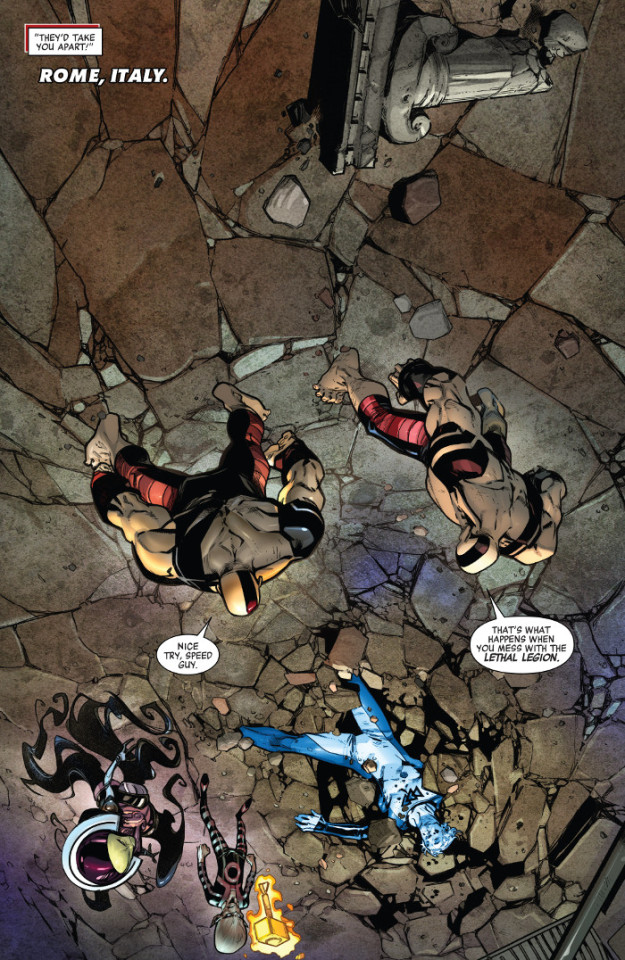

Black Crown Quarterly #2 adds some more comic previews, interviews, and various odds & sods to the mix. Rob Davis’ Tales from the Black Crown Pub remains the best thing about the anthology, but the Cüd comic is growing on me. It’s nice to see James Coe’s Bandtwits continue here, it was one segment I was expecting to see spun out to its own comic. Also, House Amok by Christopher Sebela and Shawn McManus is deliciously twisted.
| Published by IDW / Black Crown



Bonehead #2 puts a lot more meat on the bones of this series. Where the first issue was largely a beautiful showcase for Rhoald Marcellius and Sakti Yuwono’s art, this time Bryan Edward Hill dives into more of the world and what’s going on with “56″. It’s an interesting approach with what amounts to parkour gangs in what looks like an increasingly oppressive society, reminding me somewhat of Mirror’s Edge.
| Published by Image / Top Cow - Glitch

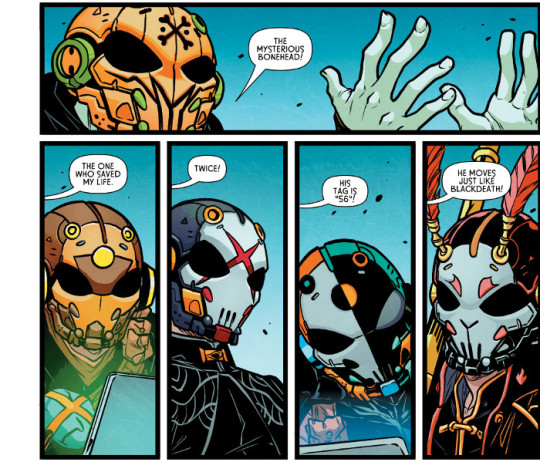

The Despicable Deadpool #293 reinforces the idea that we’re seeing Deadpool’s end of days (the writing on the wall that this arc is called “Bucket List” and we already know this incarnation of his adventures is ending at #300 notwithstanding), as the issue long fight with Rogue underlines Wade’s self-destruction and deliberate alienation of his friends and family.
| Published by Marvel



Eternity #4 brings the latest Divinity story to a close, kind of, as Matt Kindt dives deep into a meta narrative of construction, conception, and delivery of story and ideas. Trevor Hairsine, Ryan Winn, and David Baron also raise the bar with the execution of some of the glorious story ideas presented here.
| Published by Valiant



God Complex: Dogma #4 remakes Seneca, giving us a look deeper into the gods’ technology and adherence to mathematical projections for behaviour as “fate”. It also gives Hendry Prasetya and Sunny Gho a chance to show off again, delivering some beautiful artwork as it shifts between Hephaestus trying to save Seneca within the digital framework and the grit and blood of attempting to save him on the physical plane.
| Published by Image / Top Cow - Glitch

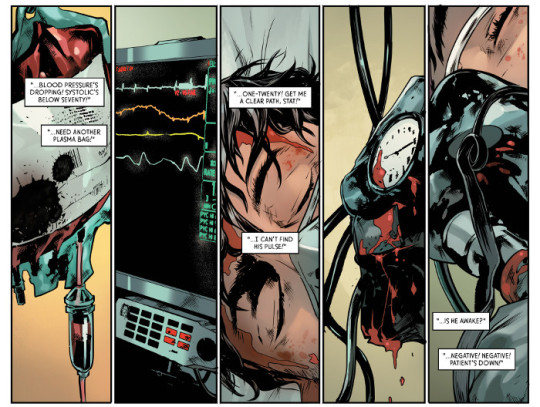

Hack/Slash: Resurrection #4 is messed up. This, of course, is a good thing as Tini Howard continues with the humour of Cassie’s relationship with Laurie and adding an interesting possible wrinkle to series’ mythology.
| Published by Image



Hungry Ghosts #1 is the start of an anthology series of food-themed horror stories with the overall narrative being linked through a game of kaidan (some would also know it as kwaidan)--basically a party game wherein participants tell one another ghost stories and then see whether or not they’ve been possessed in a mirror once they’re done--written by Anthony Bourdain and Joel Rose, and illustrated by an assortment of artists.
This first issue sets up the rules, the framing narrative, and a couple of stories. It’s good so far, with art provided by Alberto Ponticelli for the framing narrative and first story, Vanesa Del Rey for the second story, and colours by José Villarrubia. The first story is a kind of traditional cautionary tale of helping others, whereas the second is a kind of humorous horror story of the perils of being a dick.
| Published by Dark Horse / Berger Books



Jean Grey #11 is an interesting, oversized finale for the series, which sheds a different light on what the Phoenix has been doing to young, time-tossed Jean, even as she goes through more purification by fire at the hands of other past remaining Phoenix hosts. Dennis Hopeless throws out some implications here that I really hope are followed up on in the near future.
| Published by Marvel

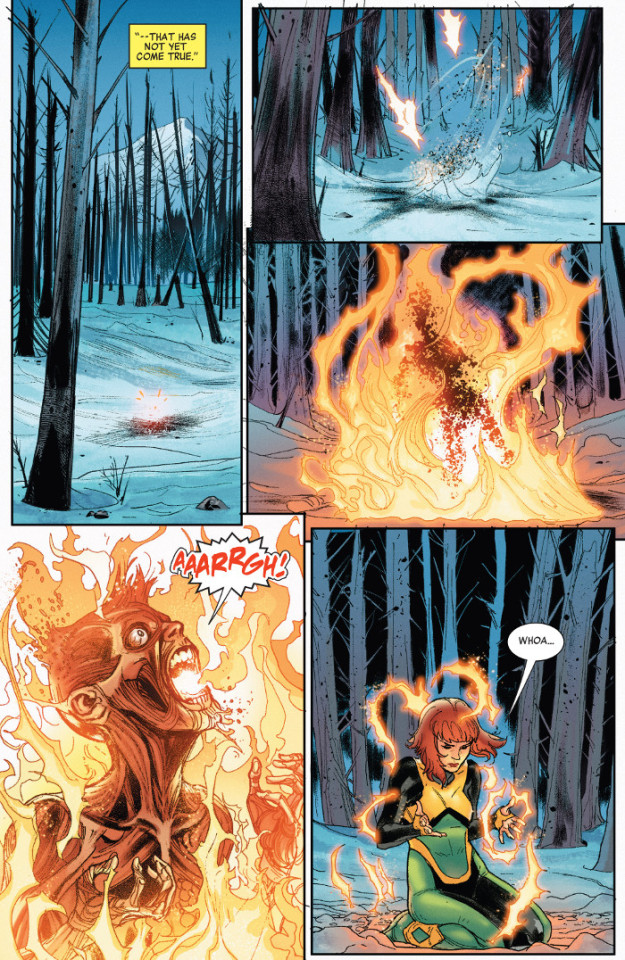

Joe Golem: Occult Detective #5 brings to a close both the “Flesh and Blood” arc and this second mini-series. This one has been good, with a nice mystery solved and some of the subplots of Joe’s history and supporting cast advanced. Patric Reynolds’ art is still a real treat, making the sunken NYC a real character in the book in its own right.
| Published by Dark Horse

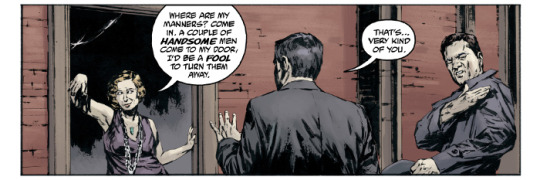

KINO #3 spotlights again one of the things that I love about this series; the use of old style comics storytelling as a narrative device itself. I love that within the normal dark, stylistic intrigue of the main narrative, there’s a stylistic shift in both Joe Casey’s scripting and Jefte Palo’s art with Chris Sotomayor’s colours to a simpler superhero style when inside the KINO conditioning programme.
| Published by Lion Forge / Catalyst Prime



Phoenix Resurrection #5 is the epic conclusion to this series, which, despite some bombast, goes out with some emotional resonance, discussion, and character building rather than the usual superhero battle. It’s a fitting and mature reawakening for the “real” Jean Grey with Matthew Rosenberg giving us another glimpse as to why he should probably be one of the voices guiding the next stage in the X-Men’s evolution. Also, there are some great shots and reveals from the art of Leinil Yu & Gary Alanguilan and Joe Bennett & Belardino Brado, with colours by Rachelle Rosenberg. I know it’s not continuing into X-Men Red, but I particularly like the black and red variant on the Phoenix costume.
| Published by Marvel



Spawn #282 is ostensibly the conclusion to the “Dark Horror” story-arc, that gained this extra chapter somewhere along the way. As the story progressed, its felt like Todd McFarlane has been taking over more of the scripting, steering it more towards more traditional Spawn storytelling, and, although it has felt a bit at odds with the original oblique Japanese horror told through suggestion and conversation, it has still be entertaining. Also, Jason Shawn Alexander’s artwork has remained a beast.
| Published by Image

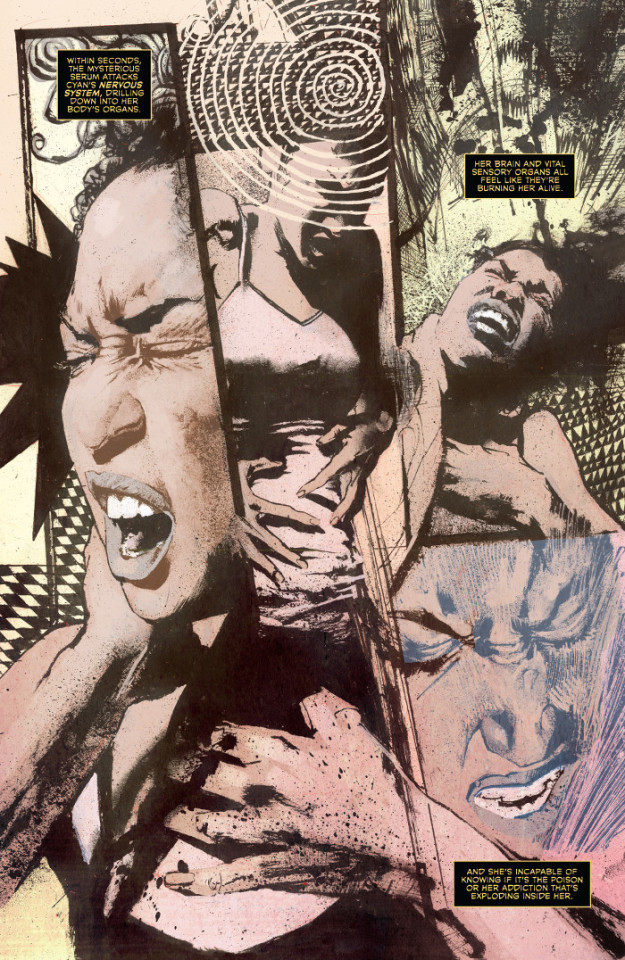

Star Wars: Doctor Aphra #16 sees the crap hit the proverbial fan as Aphra and her team face off against an angry archaeotech trap. The humour hits probably and all time high this issue, as the relationship between Aphra and Tolvan develops further.
| Published by Marvel



Tales of Suspense #101 continues to be one of the best buddy comedy thrillers in comics right now. Matthew Rosenberg’s characterization of Hawkeye and Winter Soldier are hilarious and help propel them through the action and intrigue in the book. Travel Foreman’s art (with colours by Rachelle Rosenberg) also continues to impress with some really nice panel transitions and action sequences.
| Published by Marvel



Underwinter: A Field of Feathers #4 is dark, very dark. As Felix and Rose battle over their kids, something worse happens. Ray Fawkes manages to amplify the horror exponentially.
| Published by Image



Other Highlights: All New Wolverine #30, Amazing Spider-Man: Renew Your Vows #15, Animosity #12, The Beautiful Death #5, The Beauty #19, Big Trouble in Little China: Old Man Jack #5, Black AF: America’s Sweetheart, Captain Marvel #128, Dark Ark #5, Defenders #9, Dread Gods #3, Elephantmen #80, Eternal, Falcon #4, Incredible Hulk #596, Infinite Loop: Nothing but the Truth #4, Invincible Iron Man #596, Jessica Jones #16, Kaijumax: Season 3 #6, Lazaretto #5, Maxwell’s Demons #2, Moon Knight #191, Old Man Logan #34, Outcast #33, Punisher: The Platoon #5, Quantum and Woody! #2, The Realm #5, Rick & Morty #34, Riverdale #10, Spider-Gwen #28, Star Trek: Boldly Go #16, Star Wars: DJ - Most Wanted, Star Wars: Forces of Destiny - Rose and Paige, Void Trip #3
Recommended Collections: Godshaper, Kill the Minotaur, Royals - Volume 2: Judgment Day, Saucer State, US Avengers - Volume 2: Stars & Garters, Venom - Volume 3: Blood in the Water, Violent Love - Volume 2: Hearts on Fire, Wayward - Volume 5: Tethered Souls

d. emerson eddy is revisiting The Moon and Antarctica. Wondering about the dark centre of the universe and all these tiny cities made of ashes.
2 notes
·
View notes
Photo
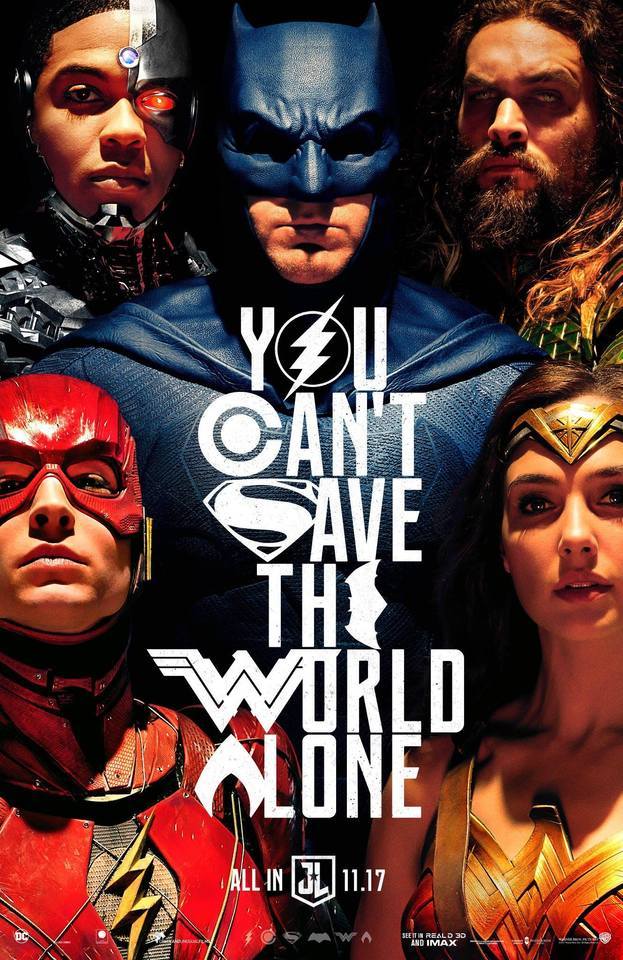
Disclaimer: I was a huge fan of the Justice League Unlimited animated series while growing up. You can say that I’ve been waiting for this movie my entire life.
I’ve read a lot of the initial reviews before watching this movie, and to say that I was disheartened with what the critics were saying is an understatement. After watching it though, I have to agree with most of them. I am talking about the critics with mixed reactions. Those who gave overly negative reviews obviously already hated this movie before even seeing it. It’s so apparent in the way they wrote their reviews. And that dude who said the way they digitally removed Henry Cavill’s mustache was distracting? I don’t know what the hell he was talking about. These folks are the equivalent of online trolls and are best ignored.
This movie could have been better. In fact it should have been better. But with the way the studio decided to rush things, and with certain creative decisions Zack Snyder and Co. made in the previous DCEU movies (like prematurely killing off Superman), the people behind this movie were basically making a movie with one had tied behind their backs. The fact that they managed to create a movie that is both watchable and fun is nothing short of a miracle. I do think that Batman vs Superman was not really a bad movie. Even if they tried to cram so many things in it, even if it was overly long, even if the way they introduced the future Justice League members was so contrived— it was quite fun to watch especially for fans of DC comics, despite its numerous loopholes and ridiculous plot points (hello, Marthagate). A lot of people didn’t like it though, to them the good points weren’t enough to offset the bad. Many complained about the convoluted plot. Justice League is not guilty of that. In fact, the plot may be too simple. A lot of people didn’t appreciate the dark tone, especially the brutal portrayal of Batman (which I loved). They would like Justice League. it’s lighthearted and funny. A lot of people thought Batman vs Superman was too long and there are so many unnecessary scenes. Justice League is a taut 2 hours and almost every scene is essential. So evidently the producers are pandering to those people who hated the previous movie. However, there are still a lot of glaring faults that are difficult to ignore.
First, more of the good stuff. As with the rest of Zack Snyder’s movies, the cinematography is astounding. Hate his movies all you want, but even the worst one looks gorgeous on the big screen. Yeah the CGI looks unrealistic at times, but never to the point that it gets distracting. Also typical of Zack Snyder’s movies are awesome action scenes. Almost all of the action sequences here were awesome. And again, that one involving the Amazons was spectacular, arguably the best one in the movie. Another good point? This movie had a lot of funny jokes, and none of them fell flat. Many times the movie theater was bursting with laughter. The acting was also good. Each actor was cast perfectly in their roles. And kudos to the people behind Jason Momoa’s casting. He did the unthinkable. he transformed a comic book character that is often the butt of jokes into someone awesome. Perhaps the best part is the interaction of our heroes with each other. This is probably Joss Whedon’s doing, and it’s better than his work on the Avengers movies.
These characters are really fun to watch, and that makes Warner Brother’s decision to create a Justice League movie before introducing these heroes in their own solo movies look even more boneheaded. Granted, Cyborg probably cannot launch his own movie. Except for kids familiar with him based on the cartoons, most people don’t know the character. The little backstory they had on him in Justice League was enough, similar to the way Black Panther’s short back story in Captain America: Civil War was enough. But the Flash can launch his own movie. The back story given to him in Justice League was severely lacking. He was hit by lightning. That’s it. This problem would have been avoided if he was introduced in his own movie. The same can be said with Aquaman. Granted, when they were planning all this nobody would probably watch a solo Aquaman movie, but if the character had an extended cameo elsewhere people would have seen how awesome he is and they would watch a solo Aquaman movie where they could further flesh out the character. And that movie should have been released before Justice League! Suicide Squad got away with this because most of those villains were unknowns to many people. But these are very popular superheroes, even more popular than most of those included in the Avengers. They need back stories to flesh them out.
I am also not a fan of the musical score. It sounded like music you hear from movies released in the 80′s or 90′s. This is most apparent on this movie’s version of Wonder Woman’s theme. Gone are the riffs that made it so awesome. What I heard was a version that is more apt in an Opera.That definitely made me cringe.
Perhaps the worst part of this movie is the main villain. I am not gonna complain about his appearance or the fact that he is purely CGI. That would be nitpicking. This villain has no backstory at all. He invaded the Earth many centuries ago. That’s it. Where did he come from? How does he travel from one place to another through those portals? Where do those portals lead? The movie does not give any answers. In fact Steppenwolf’s appearances are so arbitrary, he’s only there so our heroes would have someone to fight. What makes it worse is that he’s a pansy. He is way weaker than all the previous villains in the DCEU. You’d think they would have created a more formidable opponent to justify the need for our heroes banding together. If there’s one good thing about our villain, it’s that his minions have at least some sort of character compared to the totally nondescript ones we’ve all seen in movies such as Suicide Squad and The Avengers (gasp! blasphemy!). Otherwise, he’s arguably the most useless villain we’ve ever seen in a Superhero movie. Such a pity because this character is pretty bad ass in the comics!
But as I’ve said, the awesome characterization and the interactions between these heroes are enough to save this movie. And perhaps general audiences would like it more— thanks to the funny jokes, the tighter pacing, the reduced screen time, and the lighter tone. By the time the end credits rolled a lot of people were clapping their hands. I did not witness such a reaction when I saw Batman vs Superman. Justice League may be flawed, but based on that reaction i guess Warner Brothers is headed in the right direction. I just hope that by the time the sequel comes out, we will finally get the Justice League movie that we all deserve.
—
my rating: 3.5/5
13 notes
·
View notes
Text
Bookshelf Briefs 11/28/17
It’s a cornucopia of briefs!
Ace of the Diamond, Vol. 6 | By Yuji Terjima | Kodansha Comics (digital only) – Training camp continues, and the coach has arranged for some practice games right afterwards, the better to gauge how well the first years play when exhausted. For Furuya, the answer is initially “not well,” but he never loses his determination, and once he swallows his pride and asks Miyuki for advice, finally internalizes the truth that, at Seido, he’s got teammates who are going to back him up, even if the batter does manage to get a hit. Eijun’s fun and everything, but Furuya is not your typical shounen protagonist, and I’m pleased that he’s getting his share of attention. I also liked that the boys hang out some with varsity teammates we’ve barely glimpsed, and we learn how awesome the captain is. I am already relishing the thought of future marathon rereads of this series. It’s a keeper for sure. – Michelle Smith
Cells at Work!, Vol. 5 | By Akane Shimizu | Kodansha Comics – Once again, Red Blood Cell is absent from this volume except a brief cameo. This allows us to focus our attention on the ‘normal cell’ from prior volumes, who still has a tendency to do dumb things on impulse. Fortunately, the cute adorable bacteria he’s harboring in his room are the GOOD kind of bacteria. Unfortunately, his attempt to get them to where they can do good is thwarted by a host of crises from which White Blood Cell and company must rescue him, most notably the return of Cancer Cell, who brings back the ethical ambiguity to the series as he asks essentially “are the needs of the many less important than the needs of the one?” The one being the body. This was a lot of fun. – Sean Gaffney
Delicious in Dungeon, Vol. 3 | By Ryoko Kui| Yen Press – The cast expands a bit in this third volume. We see one of our team’s old comrades, who left them due to actually wanting to get paid, and the complicated relationship she has with them, particularly Marcille, and it’s made clear she’s not a bad guy—everyone has their own needs and drives. As for Marcille, we also get a flashback to her school days, which shows how she met Laios’ sister (still being digested by a dragon, if you recall), which is rather cute. And of course more ridiculously gross yet amusing monster recipes. And plenty of humor, as it turns out tentacles can be peeled sort of like bananas. Still good, though I’d like to get the sister rescued or declare her dead. – Sean Gaffney
The Full-Time Wife Escapist, Vol. 6 | By Tsunami Umino | Kodansha Comics (digital only) – It was inevitable that Mikuri and Hiramasa would discover that they are in love with each other, but I am still kind of surprised that it actually happened. It’s lovely to see him grinning like a doofus at the office after an evening of fooling around, but I appreciate that the transition into a real marriage isn’t exactly going to be smooth. Mikuri is worried, for example, that she’ll be expected to do the same amount of work for free, while Hiramasa worries about his waning sex drive. Somehow I doubt we’ll ever see the latter issue addressed Everyone’s Getting Married! I also really enjoyed the scenes where Mikuri’s aunt and Kazami get to know each other better—I wholeheartedly approve of them hooking up! – Michelle Smith
Haikyu!!, Vol. 17 | By Haruichi Furudate | Viz Media – And so our heroes pull it off, and get to advance, while Aoba Johsai has to suffer an ignominious defeat. This is done in the best possible shonen way, with lots of noble tears and resolve to get even stronger. The cliches don’t FEEL like cliches—the author is adept at making this feel fresh even when you know where every plot beat is going to be. And so it’s on to the finals, and I suspect this game may drag on a while, as it’s a best 3-sets-of-5 game. Their opponent is Shiratorizawa, who I’m sure we’ll find out more about as we move on, but who clearly have one player who’s REALLY good, and the volume ends with our heroes down by quite a bit. I think they’ll come back, though. Just a hunch. – Sean Gaffney
Hana & Hina After School, Vol. 3 | By Milk Morinaga | Seven Seas – This turns out to be the final volume, and honestly you get the sense it was cut a bit short—the last half feels rushed. Of course, considering all we were getting before that was a slow-burning pile of angst, it might be best that it got the push. Morinaga Milk has always been better at fluffy than angsty, so it comes as something of a relief when our two heroines finally get over the whole “is it just me? Did she mean it when she said she’s not that way?” drama and get together (in all respects—as with previous MM titles, there’s a brief, not-that-explicit sex scene here). In the end, this was a cute read, but I’ve seen better yuri from this author. – Sean Gaffney
Horimiya, Vol. 9 | By Hero and Daisuke Hagiwara | Yen Press – Horimiya has always tried to be at least slightly more realistic than a lot of romance manga, and thus watching Yuki’s ongoing angst regarding her lies and deceit and how it’s impacting other people is particularly painful. I’m not really all that sure I want her to win here, even though the alternative will also suck. On the bright side, Hori and Morimiya are doing better than ever, and as Hori is forced to think about her future—something which she seemed to have given not a single thought to—but she realizes here that no matter what she does, she wants to be with Miyamura. This leads to a sort of adorable reverse proposal, which fits the general characterization. Still good, but I hope it’s wrapping up soon. – Sean Gaffney
JoJo’s Bizarre Adventure: Stardust Crusaders, Vol. 5 | By Hirohiko Araki | Viz Media And so, finally, JoJo’s has run up against my ability to get 500+ words out of each volume. Yes, this is the first volume to get a Brief rather than a full review, and I put the blame entirely on the rambling Road To Cairo plot that Araki has chosen to use this time around. Individual moments are as striking as ever—I felt the killer baby was more interesting as a killer within dreams than in the real world, and the surprise non-death of a character feels a bit cheap. But JoJo’s still has its bizarre visuals and grotesque violence, and as long as it keeps that up it should stay interesting, even if Jotaru continues to be the dullest Jo we’ve had to date. – Sean Gaffney
Kiss & White Lily for My Dearest Girl, Vol. 4 | By Canno | Yen Press – Most sports manga fail to show the heroes moving on to a professional career, with a few exceptions like Captain Tsubasa. In reality, a lot of sports careers end just the way we see Mizuki’s end here—she comes close to the Nationals, but doesn’t make it, and realizes that this is it, she has to stop doing track and decide on an actual career. There’s also her relationship with Moe, which may actually be hindering her for a spell—it’s gotten to the point where she forgets running was fun—but eventually proves stronger than both thought, and we get a proposal (of sorts) and a kiss. This is a bit stronger than Hana & Hina, even if it’s just as fluffy, and I’m pleased to see it continue. – Sean Gaffney
Log Horizon: The West Wind Brigade, Vol. 7 | By Koyuki and Mamare Touno | Yen Press – The comedy is kept to a minimum here, as we get the more dramatic parts of the third and fourth novel, intermixed with how it’s affecting the West Wind Brigade. Kawara’s on the cover, and we get a bit more insight into her character—basically, she’s an instinctual fighter but a bit of an idiot who got into the game because she wanted to be a shonen hero, and the West Wind Brigade was the only one that would take her in. It does also show off her strengths as well, though. That said, easily the most interesting part is the ending, where we get a surprise appearance by a seemingly insane Nureha, who’s met by a battle-crazy Soujiro. I want to see how this battle turns out. – Sean Gaffney
My Hero Academia, Vol. 10 | By Kohei Horikoshi | Viz Media – I appreciate that Horikoshi is willing to let Bakugo be a completely unlikable jerk, driven by rage and jealousy and every single negative emotion, and yet still show that he realizes the difference between good and evil—that he’s decided that he wants to be a HERO rather than a villain, even if that means going against what comes more naturally. It’s a terrific scene that really made me like him. On the flip side, the disguises used to infiltrate Evil HQ are hilarious, particularly Deku and Momo. The humor is needed, as this is something of a grim arc, especially with the arrival of a Bigger Bad towards the end. This volume shows off everything that has made this the hot new Jump title. – Sean Gaffney
Nisekoi: False Love, Vol. 24 | By Naoshi Komi | Viz Media – Even though it’s obvious Onodera’s going to lose, give credit to the author for not making it easy. She and Raku have really developed a close relationship, and even if it’s not romantic I hope they can stay friends. More to the point, the fact that Onodera is willing to help Raku track down Chitoge by FLYING TO AMERICA with him (because Chitoge has, like many tsundere heroines in denial, literally run halfway across the Earth to escape her love issues) shows off her truly ridiculous kindness. There’s the last popularity poll in this book, and Chitoge and Onodera are separated by barely 100 votes. That’s impressive for a harem title. In any case, it wraps up next time, so keep reading. – Sean Gaffney
One Piece, Vol. 84 | By Eiichiro Oda | VIZ Media – It’s been a while since we had a volume that focused on further sad backstory for one of the Straw Hat crew, but that’s what we get here, with many hard-to-read scenes about Sanji’s abuse at the hands of his family, intercut with a silly fight in which Luffy defeats a bunch of cracker soldiers by eating them. Because Big Mom is threatening to kill Chef Zeff if he doesn’t comply, Sanji is forced to both insult and attack Luffy in an attempt to get him to abort the rescue, but of course this doesn’t work. In addition to this riveting drama, there’s also the question of whether Pudding (Sanji’s seemingly sympathetic bride-to-be) can actually be trusted, more information about the ponegliffs (yay!), and a glimpse at the unintended consequences of toppling Doflamingo. Plus, Brook actually gets something important to do! This series is still excellent. – Michelle Smith
By: Michelle Smith
1 note
·
View note
Text
Doctor Strange 2: 5 Things It Needs To Improve From The First One (& 5 It Should Keep The Same)
At this year’s Comic-Con, Marvel Studios officially announced their sequel to 2016’s Doctor Strange, which will be titled Doctor Strange in the Multiverse of Madness and is set to bring the Sorcerer Supreme into alternate realities with Scarlet Witch.
RELATED: Doctor Strange: 10 Fan Theories About Scarlet Witch's Role In The Multiverse Of Madness
Director Scott Derrickson is set to return and Benedict Cumberbatch, Benedict Wong, and Rachel McAdams are all due to reprise their roles. The first Doctor Strange movie wasn’t terrible by any means, but it was also far from perfect. So, here are 5 Things Doctor Strange 2 Needs To Improve From The First One (And 5 It Should Keep The Same).
10 Improve: Stephen Strange being so similar to Tony Stark

With his chauvinistic attitude, materialistic playboy lifestyle, and weirdly shaven goatee, the Stephen Strange we were introduced to in Doctor Strange was basically a second-rate Tony Stark. His life of excess comes crumbling down, he has to put the pieces back together by becoming a superhero, and he learns to put the needs of others above himself.
Strange’s character arc mirrored Tony’s in some very shallow and obvious ways. In the comics, Stephen Strange’s downfall is his arrogance, so that can remain a part of his characterization in the movies, but more needs to be done to differentiate him from Stark.
9 Keep the same: Mind-boggling visual effects

Even people who hated Doctor Strange are willing to admit that the visual effects are incredible. The folding of cityscapes gives Inception a run for its money, but that’s just the tip of the iceberg – there are also hands growing out of hands growing out of hands and rainbow slides leading to the edge of reality.
Since the upcoming sequel promises not only a multiverse, but one of “madness,” we should have some equally trippy visuals in store. Doctor Strange’s CGI worked because it had fierce imagination at the helm; the sequel needs the same level of creativity behind it.
8 Improve: Banal romantic subplot

Although Rachel McAdams is an incredible actor and she performed her scenes in Doctor Strange phenomenally, the movie’s romantic subplot was pretty banal. The idea that the male lead and the female lead had already gotten together and it hadn’t worked out was a novel and fresh spin, but since it didn’t really develop at all and McAdams didn’t seem to share an ounce of chemistry with Benedict Cumberbatch, it failed.
RELATED: The 5 Best (And 5 Worst) Couples In The MCU
The sequel can still salvage it, though. With Jane Foster returning to the Thor franchise and WandaVision set to give the titular couple an experimental sitcom treatment, maybe the MCU’s Phase 4 will be marked with “fixing” the franchise’s most boring couples.
7 Keep the same: Strange’s relationship with the Cloak of Levitation

One of the best things that can be done with modern CGI effects is turn inanimate objects into their own character. Doctor Strange’s Cloak of Levitation was given its own personality in his 2016 standalone movie and the two developed a real on-screen relationship.
We saw that relationship grow in Avengers: Infinity War as the two worked in tandem to fight Ebony Maw on his Q-Ship. Strange’s appearance in Endgame was so brief that the pair didn’t share any moments together, but Strange’s relationship with the Cloak of Levitation shouldn’t be forgotten altogether in his solo sequel, because it was one of the most fun parts of the first one.
6 Improve: Easily defeated villain

The MCU has been criticized for its “villain problem,” and this could be boiled down to villains who are built up as terrifying threats, but turn out to be easy to defeat. Dormammu is a prime example of this. We were told that he was the ruler of the Dark Dimension and that he was bent on consuming Earth.
However, when it actually came to fighting him, Stephen Strange was able to annoy him into submission. Suddenly, he didn’t seem like such a formidable opponent. It would be another thing if the “Dormammu, I’ve come to bargain!” scene was caught in a Groundhog Day loop that seemed to last longer than five minutes, but it didn’t.
5 Keep the same: Outside-the-box final battle

Having said that, what the first Doctor Strange movie did wonderfully was subvert audiences’ expectations of a big, bombastic third-act battle that would total a city in the name of killing one guy. In Doctor Strange, the final battle sees the title character working to prevent city-wide destruction.
As far as the wider world is concerned, the Masters of the Mystic Arts don’t exist and nothing of note happened in Hong Kong that night. It wasn’t just a subversion of the audience’s expectations; it was a complete reversal of them. Scott Derrickson should do some similar outside-the-box thinking with the sequel’s final battle.
4 Improve: Humor

Ever since Guardians of the Galaxy used humor to endear viewers to obscure characters they didn’t know existed, comedy has become the cornerstone of the Marvel Cinematic Universe. The Ant-Man films are full-on comedies and even serious movies with grave stakes like Captain America: Civil War are jam-packed with jokes.
RELATED: 10 Funniest Characters In The MCU
Doctor Strange was no different, but a lot of the humor didn’t land. Stephen Strange trying to get Wong to laugh was the only bit that landed (especially that Beyoncé gag) and it all felt so forced. If the sequel will continue utilizing humor like the rest of the MCU, then it needs to be better-crafted and less cringeworthy.
3 Keep the same: Weirdness
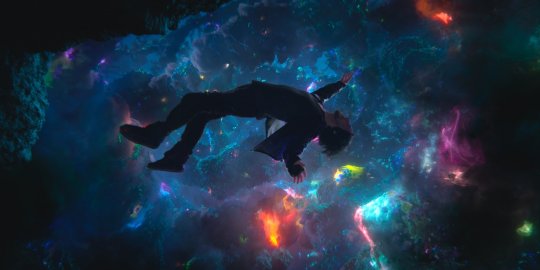
The key to making an MCU solo franchise work is offering something that the other movies don’t. Ever since Taika Waititi fixed the Thor franchise, we know we can expect an ‘80s-style sci-fi adventure like Flash Gordon or Masters of the Universe, and we can’t find that anywhere else in the Marvel Cinematic Universe.
The Guardians movies give us cosmic adventures, comic banter, and pop music; the Ant-Man movies are wacky crime capers etc. Doctor Strange’s gimmick is that his movies are by far the weirdest that the MCU has to offer. Scott Derrickson’s greatest achievement as the original’s director was embracing the weirdness of the character and his world. The sequel should continue to lean into that.
2 Improve: Predictability

The first Doctor Strange movie was a pretty formulaic origin story. We knew that everything Stephen Strange was introduced to (the Eye of Agamotto, the title of Sorcerer Supreme etc.) would somehow end up in his wheelhouse by the end of the movie. We could see almost every plot turn coming from a mile away.
But the sequel has a golden opportunity to break the shackles of predictability and really surprise its audience. This has happened already with the announcement that it’ll be a horror movie – no one saw that coming – so it seems to be on the right track.
1 Keep the same: Emotional scenes

When the Ancient One died in the first Doctor Strange film, we really felt the weight of her death. Tilda Swinton played the scene beautifully, coming out of her body and slowing down time and telling Strange that she knew exactly how and when she’d die and always thought she could accept it, but suddenly couldn’t do it when push came to shove.
It was a really poignant moment that gave the movie some substance under its dazzling visual style. Scott Derrickson shouldn’t shy away from giving us more scenes like this in the sequel, even if it is going to be a horror movie.
NEXT: Suicide Squad: 5 Things James Gunn Should Change From The Original (And 5 He Should Keep The Same)
source https://screenrant.com/doctor-strange-2-needs-improve-keep/
0 notes
Text
How I'm going to let out all my English Major rage over the mcu
Fair warning, this is just me thinking out loud about future very hypothetical projects.
So it's now been, like, nearly a day since I posted a very long rant about Thanos and I have no regrets. Like, I still think I'm right. Clearly Marvel could have done more, but they either did not realise or did not care to develop the incredible possibilities of Thanos' characterization. There is only one possible response to this realization.
@marvel hire me I can write you movies that are both action movies and have a coherent and impactful social theme. I'll rewrite a bunch of the earlier ones and you can pretend that they're what you meant to do all along.
Actually, though, I just want to see all the potential in the mcu realised. There are so many places where I think you could have done great things and instead your movie is mediocre at best. This is what I would do to realise that potential, if I had the time and energy to create the MCU in the shape I would want to watch. I would want to keep the foundations of the worldbuilding the same, and deal with mostly the same stories, just with a bit more consistency overall, especially when it comes to characterization. There are some places where the changes would end up making a big difference in what can reasonably play out later, though. Honestly, the biggest thing is that I think these stories can tackle really big issues, but they always shy away or seem unaware of what they're saying , and the result is that they're thematically inconsistent and sometimes really weak. So, here are the movies I would love to rewrite, in an ideal world where I can devote all my energy to fixing Marvel's mistakes.
Iron Man (2008): honestly I don't think this one needs too much touching up. I would have to watch it again but I think it's solid as a basic superhero origin story.
The Incredible Hulk (2008): I haven't seen it and I didn’t intend to, but Bruce Banner deserves characterization so I’ll at least watch it and decide.
Iron Man 2 (2010): I had to read a plot summary to remember the details of this movie, but it looks like there are some thematic elements that could be built up a bit. Looking at it, I'm thinking now that I would like to have a lot of thematic coherence running through the whole series, and a lot of the foundations for that would be laid in this film's narrative about Howard.
Thor (2011): yeah this is on the list for a full rewrite with the focus on 'show us that Thor has learned something instead of just telling us' and 'make Loki make sense'. All the foundations for Loki in the Avengers have to be actually laid here.
Captain America: The First Avenger (2011): like Iron Man, this is a pretty solid movie on its own. Most of the things I would change would be more easily done in a visual format than in fic. But I think you could probably lay a bit more groundwork for Civil War Steve in this movie and it wouldn't be hard. I would rewrite it but not high on my priority list.
The Avengers (2012): absolutely. Avengers and Age of Ultron are huge obstacles to character continuity and thematic continuity and they need to be rethought.
Iron Man 3 (2013): I have no particular feelings about this movie. At very least, it will take some modification to make it flow more coherently with the rest of the series, and also it would be nice if the Mandarin was a bit more solid as an opponent.
Thor: The Dark World (2013): rewrite. Because it's bad and also because continuity! Character arcs!
Captain America: The Winter Soldier (2014): I actually think Winter Soldier is one of the best mcu movies. I would still rewrite it, but just to lean in a bit more with the SHIELD/Hydra ethical dilemma and bring back around some themes of nationalism and resistance from First Avenger.
Guardians of the Galaxy (2014): I would leave it. It's another origin story. I couldn't reproduce the feel of it, and I don't know what I would change.
Avengers: Age of Ultron (2015): rewrite, for the same reasons as the first Avengers.
Ant-Man (2015): like Winter Soldier, it would only take minor modifications to bring some of the big themes a little closer to the front. I don't even know if it would be necessary at all.
Captain America: Civil War(2016): a lot of rewriting to do here, and it starts with understanding how the UN works and ends with having a plot and theme that makes sense. I don't know if people would like my version any better than Marvel's, though, because I, too, would structure it like an Avengers movie more than like a Cap movie.
Doctor Strange (2016): I would probably rewrite it just because I could but, like, I don't care enough about it to know right now what I would do, exactly.
Guardians of the Galaxy Vol. 2(2017): See Doctor Strange
Spider-Man: Homecoming (2017): It's good. I would leave it.
Thor: Ragnarok (2017): I'm not touching this it's a work of art. I would be writing everything about Thor and Loki with this movie in mind.
Black Panther (2018): This movie is also perfection and I couldn't do it any better. I want to write beautiful essays about Black Panther. I don't want to change it.
Avengers: Infinity War (2018): See the Thanos post. I would absolutely rewrite this.
Ant-Man and the Wasp (2018): I haven't seen it yet, but I do plan to, and it will by that point have to be brought in line with everything else.
Ultimately, some of the movies that I don’t want to change at all would need ‘missing scenes’ bits, little explanations to keep everything consistent, especially Black Panther because it immediately follows Civil War. But that’s the final step.
#mcu#avengers#marvel#this is just me ranting a bit#i do actually want to write this but it's probably just too ambitious for me#i need a tag for when the academic in me is angry
0 notes
Text
Brazil: Far-right candidate Jair Bolsonaro poised for victory | Brazil News
Sao Paulo, Brazil – Brazilians go to the polls on Sunday to elect their subsequent president, with most indicators suggesting that South America’s most populous nation will elect a far-right ex-army captain who many worry will catapult it into a brand new period of authoritarian rule.
An opinion ballot launched on Thursday by the Datafolha polling company confirmed that Jair Bolsonaro’s lead may need fallen by three proportion factors, however the 63-year-old was nonetheless comfortably forward within the race, with 56 % of voter assist.
His runoff rival, Fernando Haddad of the leftist Employees’ Celebration (PT), was at 44 %.
Bolsonaro is an outspoken supporter of Brazil’s 1964-1985 army dictatorship that executed lots of of political opponents and tortured 1000’s extra. Prior to now, he has praised the regimes of former Chilean dictator Augusto Pinochet and Peru’s former authoritarian President Alberto Fujimori.
“These pink (leftist) criminals can be banished from our homeland,” Bolsonaro mentioned in an impassioned and confrontational speech final week, which was broadcast reside to 1000’s of supporters.
“It is going to be a cleaning like by no means earlier than seen within the historical past of Brazil.”
Bolsonaro additionally has a protracted historical past of disparaging remarks about LGBT folks, girls and minorities, in addition to statements in favour of torture and police extrajudicial killings, together with a pledge to offer police “carte blanche” to kill suspects.
‘Threatens the world’
His rhetoric has urged some commentators to explain him as a mix of US President Donald Trump and Philippines chief Rodrigo Duterte.
“For the primary time in 32 years of exercising the suitable to vote, a candidate evokes me to worry,” Joaquim Barbosa, Brazil’s former Supreme Courtroom justice chief, wrote on Twitter on Saturday morning.
“That’s the reason I’ll vote for Fernando Haddad,” added Barbosa, who six months in the past was tipped to presumably be the nation’s first black president.
Earlier this week, main worldwide intellectuals together with Noam Chomsky launched an announcement, saying a Bolsonaro victory “threatens the world, not simply Brazil’s fledgeling democracy”.
“His programmes for the nation, if utilized, can be very worthwhile for buyers and the super-rich on the expense of the inhabitants thought of to be nugatory,” Chomsky was quoted in Spain’s El Pais newspaper.
In response, Bolsonaro wrote on Friday to his greater than eight million Fb followers: “I characterize a menace, sure, to the corrupt, the bandit, the rapists, the schemes that assault the BNDES (Brazil’s improvement financial institution), the assassins and people who need to destroy Brazil!”
Bolsonaro’s meteoric rise from a fringe congressman to the sting of the presidency has come in opposition to a backdrop of financial downturn, political turmoil, mammoth corruption scandals and rising violence. Final 12 months, there have been greater than 63,00zero homicides in Brazil.
Jair Bolsonaro, left, and Fernando Haddad, proper [File: Ricardo Moraes/Nacho Doce/Reuters]
Deepening disaster
On the eve of Brazil’s final presidential elections in 2014, which noticed PT candidate Dilma Rousseff narrowly profitable re-election in opposition to her centre-right opponent Aceio Neves, Brazil had simply hosted a profitable World Cup, had been faraway from the United Nations World Starvation Map and unemployment was at a document low.
However within the years that adopted Brazil plunged into deep recession, whereas the far-reaching “Automobile Wash” corruption scandal picked up steam and toppled dozens of political and enterprise elites.
Rousseff was controversially impeached in 2016, and her right-wing successor Michel Temer was racked by scandal. In the meantime, Luiz Inacio “Lula” da Silva, Brazil’s hottest politician and a former president, was jailed earlier this 12 months on corruption costs, which he and his supporters known as politically motivated.
Now, because the nation prepares to vote, excessive poverty is on the rise and unemployment stays stubbornly excessive at 12.1 %, regardless of some latest optimistic indicators.
“The left vote has remained sturdy, regardless of falling significantly, whereas the intense proper has grown with voters who had been average, had been centre proper, however have now radicalised,” based on Mauricio Santoro, a political scientist and professor of worldwide relations on the State College of Rio de Janeiro.
Commenting on Bolsonaro’s rise, Santoro famous: “It is a mixture of Operation Automobile Wash, which hit the entire main events, and the financial disaster.”
Diego da Silva de Lima, a 28-year-old advertising analyst from Sao Paulo, mentioned he would choose Bolsonaro on Sunday as a result of he sees him “as the most effective candidate to tackle the corrupt institution”.
However whereas many Brazilians say they’ve positioned their hopes for change and a break from the system on the previous military captain, many others usually are not satisfied.
Considered one of them is Alaide Oliveira Santos. The 63-year-old Sao Paulo retiree mentioned she is contemplating backing Haddad, regardless of by no means having voted for PT earlier than.
“Issues are unhealthy and if this Bolsonaro will get in, they are going to solely worsen,” she mentioned.
Polls open at 8am native time (11:00 GMT) and shut at 5pm (20:00 GMT).
!function(f,b,e,v,n,t,s)(window, document,'script','//connect.facebook.net/en_US/fbevents.js');
fbq('init', '968100353246427'); fbq('track', 'PageView');
from SpicyNBAChili.com http://spicymoviechili.spicynbachili.com/brazil-far-right-candidate-jair-bolsonaro-poised-for-victory-brazil-news/
0 notes
Text
Hyperallergic: Chess as a Comic Book Trope
Charlton Comics, Vol. 1, No. 36. Strange Suspense Stories (March 1958) (courtesy World Chess Hall of Fame)
ST. LOUIS — “Chess and comics are a natural pair,” Shannon Bailey, chief curator of the World Chess Hall of Fame (WCHOF), told Hyperallergic. “The concepts of battle, the struggle of good versus evil, strategy, and speed, have always played a central role in both chess and comic book themes.”
Bailey organized POW! Capturing Superheroes, Chess & Comics now at WCHOF, a nonprofit institution that explores the connections between art and chess in its programming. Founded in 1986 by the United States Chess Federation, WCHCOF opened in St. Louis’s Central West End neighborhood in 2011, following the closure of its Miami museum in 2009. Recent exhibitions range from Designing Chessmen on the imagery of chess, to chess during World War II and the games designs of Michael Graves. WCHCOF is active as a collecting institution, and since POW! opened in March, collectors Floyd and Bernice Sarisohn — whose memorabilia and ephemera form the foundation of the exhibition — have decided to donate their comic books and related sets.
Installation view of POW! Capturing Superheroes, Chess & Comics at the World Chess Hall of Fame (photo by the author for Hyperallergic)
“Our mission is to promote the cultural and historical aspects of the game of chess,” Bailey stated. “My main vision and goal is to make chess fun and accessible to everyone.”
The POW! gallery surrounds viewers with more than 200 comic books featuring chess visuals and themes. Special-edition chess sets with comic character pieces are arranged in the center of the room, a few available to play. Some of the comics, exhibited in frames and cases, can be scrolled through with gallery iPads. There are components of the exhibition definitely aimed at kids, like a dress-up space, but there are deep themes present on how the history of comics links with that of chess. What’s recognized as the Golden Age of Comics, stretching from the 1930s to 1950s and punctuated by patriotic heroes such as Superman and Captain America, coincided with international conflicts including World War II and the Cold War, with both sides often characterizing the other as villains in their propaganda. This tone was echoed in comics. For instance, the “Five Dooms to Save Tomorrow” tale in The Avengers Vol. 1, No. 101 was issued in July 1972, at the time when grandmasters Bobby Fischer and Boris Spassky were engaged in the World Chess Championship, a match that Fischer won, and ended over two decades of Soviet chess domination. The comic is a Cold War fantasia of looming nuclear holocaust featuring a Russian chess player character, a chess-playing computer, and chess pieces laced with poison.
“Chess is a game of war — there’s always a winner and a loser — there’s always a battle,” Bailey said. “You capture pieces, you dominate another player and the board. These exact references are made in many of the comics both literally and figuratively.”
Installation view of POW! Capturing Superheroes, Chess & Comics at the World Chess Hall of Fame (photo by the author for Hyperallergic)
Sometimes very literally, with numerous covers showing characters being controlled as chess pieces on a giant board. In a 1980 Marvel comic, the Hulk is pummeled by colorful robots on a gridded floor, the text “CHECKMATE!” in red all-caps letters; the 1960s series Strange Tales: Nick Fury, Agent of S.H.I.E.L.D., illustrated by Jim Steranko, featured the villain Prime Mover, a chess-playing robot concocted by Doctor Doom. The DC Comics series Checkmate, which started in 1988, focused on a covert operation team whose hierarchy was based on chess pieces. For some comic artists, there was a personal connection to the game. In an accompanying exhibition essay, author Michael Tisserand notes that “one of the country’s first editorial cartoons, a severed snake with the title ‘Join, Or Die’ (published in 1754), was drawn by the founding father and chess enthusiast Benjamin Franklin,” while C. W. Kahles, who created the early 1900s comic Hairbreadth Harry, decorated the walls of the Brooklyn Chess Club, of which he was president, with his art.
As Bailey pointed out, chess isn’t always symbolic of a high stakes conflict between good and evil. Sometimes, as with its appearance in the Archie comic series, it’s just a “school activity that the average kid does.” Still, chess is a compelling activity for its twists and the unpredictable moves of the opponent, rewarding strategic thinking and creativity, qualities that easily align with superhero narratives and the dynamic stories of comics. As Bailey stated, “At first glance, these two may seem unrelated, and yet the more we learn, we understand why popular culture in general has so many chess references.”
Charlton Comics Group, Unusual Tales #37 (January 1963) (courtesy World Chess Hall of Fame)
Installation view of POW! Capturing Superheroes, Chess & Comics at the World Chess Hall of Fame (photo by the author for Hyperallergic)
Installation view of POW! Capturing Superheroes, Chess & Comics at the World Chess Hall of Fame (photo by the author for Hyperallergic)
Installation view of POW! Capturing Superheroes, Chess & Comics at the World Chess Hall of Fame (photo by the author for Hyperallergic)
Installation view of POW! Capturing Superheroes, Chess & Comics at the World Chess Hall of Fame (photo by the author for Hyperallergic)
Installation view of POW! Capturing Superheroes, Chess & Comics at the World Chess Hall of Fame (photo by the author for Hyperallergic)
Installation view of POW! Capturing Superheroes, Chess & Comics at the World Chess Hall of Fame (photo by the author for Hyperallergic)
Installation view of POW! Capturing Superheroes, Chess & Comics at the World Chess Hall of Fame (photo by the author for Hyperallergic)
Installation view of POW! Capturing Superheroes, Chess & Comics at the World Chess Hall of Fame (photo by the author for Hyperallergic)
Installation view of POW! Capturing Superheroes, Chess & Comics at the World Chess Hall of Fame (photo by the author for Hyperallergic)
Exterior of the World Chess Hall of Fame in St. Louis (photo by the author for Hyperallergic)
POW! Capturing Superheroes, Chess & Comics continues through September 17 at the World Chess Hall of Fame (4652 Maryland Avenue, St. Louis, Missouri).
The post Chess as a Comic Book Trope appeared first on Hyperallergic.
from Hyperallergic http://ift.tt/2wsCJPx via IFTTT
0 notes
Text
15 Comic Book Villains Who Became Heroes
Villains rarely perceive themselves to be in the wrong about anything. Some see their awful actions as necessary evils, others feel that the ends justify the means, and many others simply believe their might makes them right. Arguably the biggest difference between being a villain and being a hero is in whether their choices are being made for selfish gains or in service to the greater good.
RELATED: 13 Superheroes Who Broke Bad
Villains are often motivated by selfish desires, but sometimes, a villain can understand that helping others is better than merely going after what they want, when they want it. That understanding can put villains on the road to changing their ways – sometimes temporarily, sometimes permanently. Here, then, are 15 comic book supervillains who reformed, or at least joined the side of the good guys.
MAGNETO
From the moment Stan Lee and Jack Kirby introduced him in “Uncanny X-Men” #1, Magneto has been their main adversary. However, his characterization has evolved as more secrets about his background were revealed. Magneto is a Holocaust survivor, whose parents and sister were killed before he himself was incarcerated in Auschwitz. His experiences there hardened his resolve to ensure mutants would never be persecuted by humans, by having mutants be the rulers of humanity. This view is significantly harsher than that of X-Men founder Charles Xavier, who strives for mutants to co-exist with humans.
After many battles against the X-Men, including in “Uncanny X-Men” #150 in which he nearly killed Kitty Pryde, Magneto’s views altered and he turned himself in to the World Court in 1987’s “The X-Men vs. The Avengers,” written by Roger Stern and drawn by Marc Silvestri (issue #4 by Tom DeFalco and Keith Pollard). But an attack during the trial injured Xavier, leading him to ask Magneto to take charge of the X-Men and the Xavier School for Gifted Youngsters while he recovered. This was the first of several times Magneto was in charge of X-Men teams, although acceptance of him as a leader was slow in coming. More recently, he was the leader of a team of X-Men willing to do whatever it takes to protect mutants from harm.
SANDMAN
William Baker had a rough upbringing, abandoned by his father and raised by his mother. He was bullied and became a bully himself, eventually turning to a life of crime. Jailed on Ryker’s Island, he escaped and fled to Savannah, Ga. In “Amazing Spider-Man” #4 by Stan Lee and Steve Ditko, a day at the beach went awry for Baker. The beach was near a nuclear reactor whose steam system exploded, dousing Baker in radiation. Afterward, Baker discovered he had bonded with the sand, and could alter his shape and density.
Taking the name Sandman, Baker clashed with Spider-Man, the Hulk and the Fantastic Four over the years, and also joined the Sinister Six and the Frightful Four. A partnership with Hydro-Man in “Amazing Spider-Man” #217-218, written by Denny O’Neil and drawn by John Romita Jr. and Jim Mooney, accidentally results in their merging into a mud monster. After they separate forms months later, Baker considers changing his ways. When The Thing came to capture him in “Marvel Two-in-One” #86, Baker declines to fight and the Thing lets him go. This leads to the Sandman becoming a freelance operative for mercenary Silver Sable and her Wild Pack, becoming a member of the Outlaws, a team of reformed Spider-Man villains, and even becoming a reserve Avenger.
WONDER MAN
The hero Wonder Man began his career with the Avengers with a mission to destroy them from within. First appearing in “Avengers” #9, written by Stan Lee and drawn by Jack Kirby and Chic Stone, Simon Williams inherited the family company, Williams Innovations, after his father’s death, and managed it — poorly — after his brother Eric refused to do so. The company soon failed against rivals such as Stark Industries. Williams, on Eric’s advice, embezzled money from the firm and invested it in shady businesses linked to the Maggia. He got caught and was convicted, and blamed Stark for his woes.
However, Baron Zemo and the Enchantress secured his release, offering Williams the chance to get revenge on Stark. Zemo experimented on Williams with an ionic ray device, giving him strength, durability and other powers. While up against the Avengers, Williams has a last-minute change of heart after luring the team into a trap, choosing to fight Zemo and the Enchantress, even risking death by going without Zemo’s treatments. Wonder Man was later revived and has served with the Avengers, the West Coast Avengers, Iron Man’s Force Works team and the Uncanny Avengers.
SUPER PATRIOT / U.S. AGENT
First seen in “Captain America” #323, written by Mark Gruenwald and drawn by Paul Neary and John Beatty, John Walker grew up idolizing notions of patriotism, glory and the Vietnam War sacrifice of his brother Mike, a helicopter pilot. Walker enlisted in the U.S. Army himself, but the war ended before he ever saw combat, frustrating his desire to become a hero. Afterward, he underwent the Power Broker’s strength augmentation process and opted to join the Unlimited Class Wrestling Federation to pay for the treatments.
However, promoter Ethan Thurm steered him in another direction: becoming a motivational speaker. As the Super-Patriot, Walker spoke before rallies around the country, claiming to represent America’s “true ideals” and disparaging Captain America as dated and out of touch. Without Walker’s knowledge, Thurm staged an attack on Walker at a New York rally to bolster his image, leading to him confronting Captain America himself. Later, after Steve Rogers resigned as Captain America rather than follow orders from the Commission on Superhuman Activities in “Captain America” #332, Walker was recruited to be the new Captain America. After a rocky tenure, Walker was fired and became U.S. Agent.
MAX DAMAGE
In “Irredeemable” and its companion series “Incorruptible,” writer Mark Waid explored heroism and villainy by having the world’s foremost superhero and supervillain change outlooks. “Irredeemable” followed the dark path taken by the Plutonian after his mind snaps and he unleashes his destructive powers on millions of people, his friends and teammates on the slightest whim.
In “Incorruptible” #3 and #4, drawn by Jean Diaz and Berlardino Brabo, Plutonian’s No. 1 opponent, Max Damage, has an epiphany when he attempts his own worst feat of mayhem. Damage attempts to unleash a plague that would have killed billions of people, out of jealousy that they can feel the physical world while he cannot. Damage is super-strong and impervious to harm, with his abilities increasing the longer he stays awake and resetting when he succumbs to sleep deprivation. Damage is surprised that Plutonian doesn’t stop him from opening the plague container, instead incinerating all witnesses and dismissing Damage with a glance. With that, Damage chooses to be the hero and defender that Plutonian had stopped being.
THE SUPERIOR SPIDER-MAN
Otto Octavius, the arrogant and perpetually bitter scientist, is one of Spider-Man’s fiercest enemies. As Dr. Octopus, he’s perpetrated countless foul deeds such as kidnapping, theft, property destruction and trying to marry Peter Parker’s dear Aunt May to get property she inherited — and leaving her at the altar!
But after years of battles, Octavius found his body failing. He engineered a mindswap in which his consciousness was placed in Parker’s body, and Parker’s mind in his dying form, shown in the “Dying Wish” storyline that culminated in “Amazing Spider-Man” #700, written by Dan Slott and drawn by Humberto Ramos, Richard Elson and Victor Olazaba. Parker’s efforts to undo the swap fail, but he manages to make Octavius tap into his memories, letting him see what caused him to have such a strong sense of responsibility.
Overwhelmed, Octavius pledged to be a superior Spider-Man than Parker ever was, in the aptly named series “Superior Spider-Man.” Honoring the pledge didn’t change Octavius’ brutal nature, but Parker’s consciousness still inhabited their body and fought for control. In “Superior Spider-Man” #3o, written by Slott and Christos Gage and drawn by Giuseppe Camuncoli and John Dell, Octavius sacrificed himself and restored Parker after realizing Parker truly was the better hero.
QUICKSILVER AND THE SCARLET WITCH
Quicksilver and the Scarlet Witch have had a tortured history from the start, when they were introduced as less-than-committed members of the Brotherhood of Evil Mutants in “X-Men” #4, by Stan Lee and Jack Kirby. They are there only because they feel they owe Magneto for rescuing them from a mob and, at the time, believe themselves to be mutants. After several skirmishes with the X-Men and the disappearance of Magneto, the duo is recruited into the Avengers in issue #16, forming half of “Cap’s Kooky Quartet.”
The Scarlet Witch has been strongly associated with the Avengers ever since, finding love with the Vision and even having children, although they were removed from existence, causing her to go mad. Quicksilver has been linked to the Avengers, the X-Men, X-Factor and the Inhumans, sometimes as a member, frequently as an antagonist. Their lineage as mutants, however, was undone in “Uncanny Avengers” #4, by writer Rick Remender and Gerry Duggan and artist Daniel Acuña, when the High Evolutionary revealed they gained their powers as a result of his experiments.
HAWKEYE
Battered by his alcoholic father and orphaned when both parents were killed in a car crash, Clint Barton and his brother Barney grew up with a traveling circus. They were tutored in archery and other skills by the Swordsman and another carnie named Trick Shot. Hawkeye struck out on his own after he learned the Swordsman was stealing from the circus and beating Hawkeye up for not agreeing to keep quiet about it.
Inspired by Iron Man, Hawkeye resolved to be a hero himself. But on his first effort, he was mistaken for a thief and found himself on the run from the police. Soon after, he encountered the Black Widow, then a Soviet spy, in “Tales of Suspense” #57, by Stan Lee and Don Heck. The Black Widow enticed Hawkeye to become her partner, and they engaged in espionage against Stark Industries. After the Black Widow was injured in a fight against Iron Man, Hawkeye resolved to go straight, boldly breaking into Avengers Mansion and tying up Jarvis to prove his skills to the team. Hawkeye was part of the “Cap’s Kooky Quartet” Avengers lineup, and has been a leader of the West Coast Avengers and the Thunderbolts.
ROGUE
Rogue was a teenager confused and terrified by her powers (the ability to absorb someone else’s life energy, memories, personality and abilities through skin-to-skin contact for a limited duration). It surfaced when she kissed her young love, Cody, inadvertently putting him into coma, as revealed in “Uncanny X-Men” #185, written by Chris Claremont and drawn by John Romita Jr. and Dan Green. Her fear and frustration made her an easy target for Mystique and Destiny, who recruited her for the Brotherhood of Evil Mutants.
In “Avengers Annual” #10, written by Claremont and drawn by Michael Golden and Amando Gil, Rogue’s first mission was an attack against the team. She fought Ms. Marvel, but the extended battle made the transfer of abilities permanent. After more fights, Rogue was overwhelmed by Ms. Marvel’s memories, and sought help from Charles Xavier. Xavier’s psychic scan of Rogue showed him she was more misguided than evil. In “Uncanny X-Men” #171, written by Claremont and drawn by Walt Simonson and Bob Wiacek, Xavier brought Rogue on as a member of the X-Men, ignoring the strong objections from most of the team. Rogue has since been a mainstay of the X-Men, later developing control over her power-absorbing abilities, losing Ms. Marvel’s powers and gaining the abilities of Wonder Man.
THE BLACK WIDOW
Natasha Romanova, the Black Widow, first appeared in “Tales of Suspense” #52, written by Stan Lee and Don Rico, drawn by Don Heck. Back then, she was a Communist spy on a mission to assassinate Soviet defector Anton Vanko, which put her up against Iron Man. Her costume and equipment were upgraded in subsequent appearances, and she was brainwashed by the Soviets and sent to battle the Avengers. The effort failed, and she shook off her programming and defected to the West.
In “Amazing Spider-Man” #86, her look was changed by John Romita Sr. from short black hair, fishnet stockings and a cat’s eye mask to the familiar long red hair and black bodysuit, which came with the addition of wrist gauntlets that fire her “Widow’s Bite” and suction cups that allow her to scale walls. Since defecting, the Black Widow has frequently worked with S.H.I.E.L.D. and had multiple adventures with the Avengers before joining the team and even becoming its leader. She has also been a member of the Champions, the Defenders and the Thunderbolts, as well as a partner to Daredevil.
GALACTUS
For most of his existence throughout the Marvel Universe, Galactus has been known as the Destroyer of Worlds. Introduced in “Fantastic Four” #48 by Stan Lee and Jack Kirby, with Joe Sinott on the inks, Galactus has come to Earth in his perpetual quest to feed (which he does by draining the life force from entire planets). The Fantastic Four, with the aid of Galactus’ herald, the Silver Surfer, drive him off. Since then, Galactus has devoured the Skrull Throneworld, has been reduced from god-like stature to human form and has been both killed and resurrected. However, an adventure with the superhero team the Ultimates led to his greatest transformation.
After “Secret Wars,” the crossover that merged the various Marvel universes into one, the Ultimates sought out Galactus with the goal of changing his nature in “Ultimates” #2, by Al Ewing and Kenneth Rocafort. By having him return to his incubator and using the reality-warping material Iso-8, Galactus emerged with the power to restore life to dead planets, starting with the first planet he destroyed.
VENOM
The Venom symbiote was thought of as a mere costume for Spider-Man when first seen in “Amazing Spider-Man” #252, written by Roger Stern and Tom DeFalco, and drawn by Ron Frenz and Brett Breeding. However, the “costume” was later revealed to be a living parasitic being in need of a host body. After Spider-Man learned from the Fantastic Four that it was beginning to permanently bond to him, he rejected the symbiote and they captured it. Ultimately it escaped and latched onto disgraced Daily Bugle reporter Eddie Brock, becoming Venom, one of Spider-Man’s fiercest enemies.
Venom later bonded with several other humans, including Peter Parker’s high-school frenemy Flash Thompson. Thompson had lost both legs during his Army service in the Iraq War, but the U.S. government captured Venom after it bonded to Mac Gargan, the Scorpion, and sought to use it under its control. Thompson was offered the opportunity to bond with Venom and go on covert missions, with Venom’s bio-mass substituting for Thompson’s missing legs, as shown in “Amazing Spider-Man” #654, written by Rick Remender and drawn by Tony Moore. To stave off permanent bonding, the symbiote was plied with drugs and Thompson was limited to 48 hours of use each time out.
PLASTIC MAN
Introduced in 1941 in Quality’s “Police Comics,” Plastic Man put a zany spin on superhero adventuring, thanks to the inventive humor of his creator, writer/artist Jack Cole. Before becoming a costumed hero, Plastic Man was Patrick “Eel” O’Brian, an orphan who grew up to become small-time thief and safecracker. A job at the Crawford Chemical Works went awry when he and his crew were confronted by a security guard who shot at them.
O’Brian was hit in the shoulder and fell into a drum of experimental acid. O’Brian’s three cohorts abandoned him, and he wandered until he was taken in by a monk at a mountain retreat who nursed him back to health. O’Brian soon discovered his body had become pliable and malleable. The kindness of the monk coupled with the betrayal of his crew, led him to renounce crime and become a superhero, adopting the red and black leotard and goggles of Plastic Man. At first, he kept up the Eel O’Brian guise in order to trick crooks, but ultimately switched to being Plastic Man full-time, becoming an FBI agent and a member of the Justice League of America.
SABRETOOTH
The murderous mutant known as Sabretooth has had an ongoing, bitter rivalry with Wolverine spanning decades, even separate from his frequent battles with the X-Men. Sabretooth has been a vicious, unrepentant killer, but had a change of heart and mind imposed on him during the “AXIS” crossover.
In “AXIS,” written by Rick Remender, the Avengers and X-Men unite to defeat a clone of the Red Skull, who has acquired the power of the Onslaught entity. The effort called for the detonation of a gene bomb that had the “Inversion” effect: It altered the personalities of beings in its range, causing villains to turn heroic and vice versa. In “Avengers & X-Men: AXIS” #9, written by Remender and drawn by Jim Cheung and others, Doctor Doom and the Scarlet Witch cast a spell to undo the Inversion. However, Iron Man used his technology to shield himself from the spell and Sabretooth was shielded as well, making his personality change permanent. Sabretooth turned himself in for his crimes and later was added to the Avengers Unity Division roster.
LEX LUTHOR
Lex Luthor has been an enduring antagonist for Superman for more than 75 years, ever since the story “Europe at War” by Jerry Siegel and Joe Shuster in 1940’s “Action Comics” #23. Introduced as a criminal scientist, Luthor was retconned as being a childhood friend of Clark Kent, making him a thorn in Superboy’s side as well. Since the “Crisis on Infinite Earths,” Luthor has posed as a respectable captain of industry while only performing nefarious deeds behind the scenes. Also, more emphasis was placed on Luthor’s xenophobia. Luthor hates Superman because he’s an alien and despises that the world doesn’t care enough about human accomplishments, particularly Luthor’s.
Luthor learns Batman’s secret identity in “Forever Evil” #7, and in “Justice League” #33 muscles his way onto the team. After the “New 52” Superman died in “Superman” #52, Luthor adopted his mantle in “Action Comics” #957, wearing a high-tech suit of armor emblazoned with the “S” shield. He also buys The Daily Planet to boot, just to acquire the fallen Superman’s cape that they owned and refused to sell to anyone. He’s declared his intentions are to protect Metropolis, but he is still opposed by Superman, the pre-“Flashpoint” version who had returned following the multiverse-warping events of “Convergence.”
Be sure to let us know in the comments if there are any other supervillains who became superheroes that we forgot to mention!
The post 15 Comic Book Villains Who Became Heroes appeared first on CBR.com.
http://ift.tt/2j71dH0
0 notes